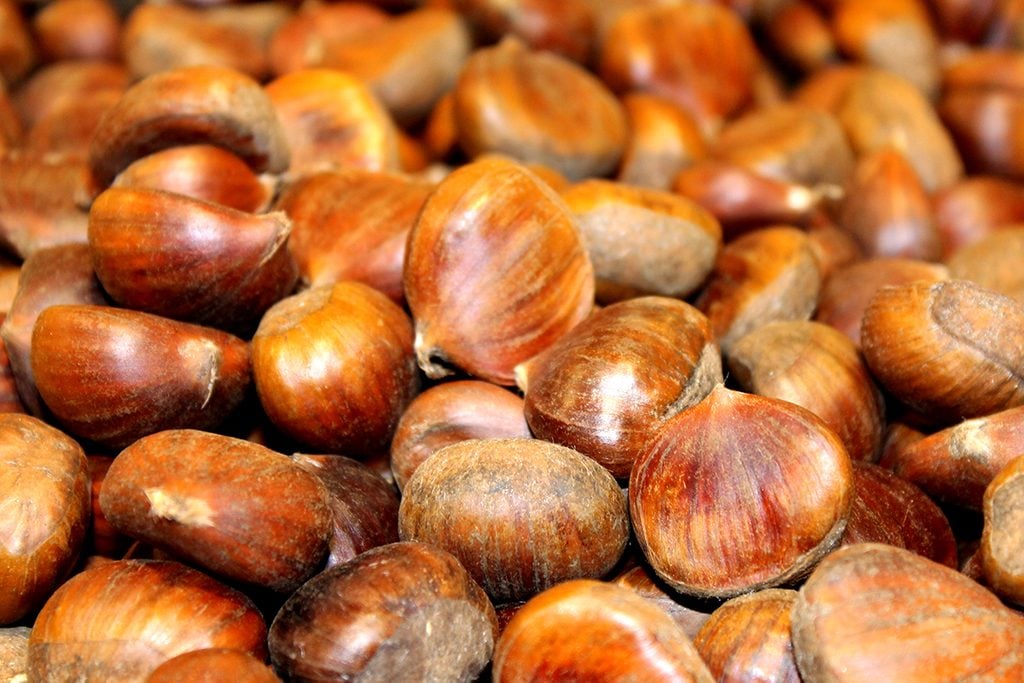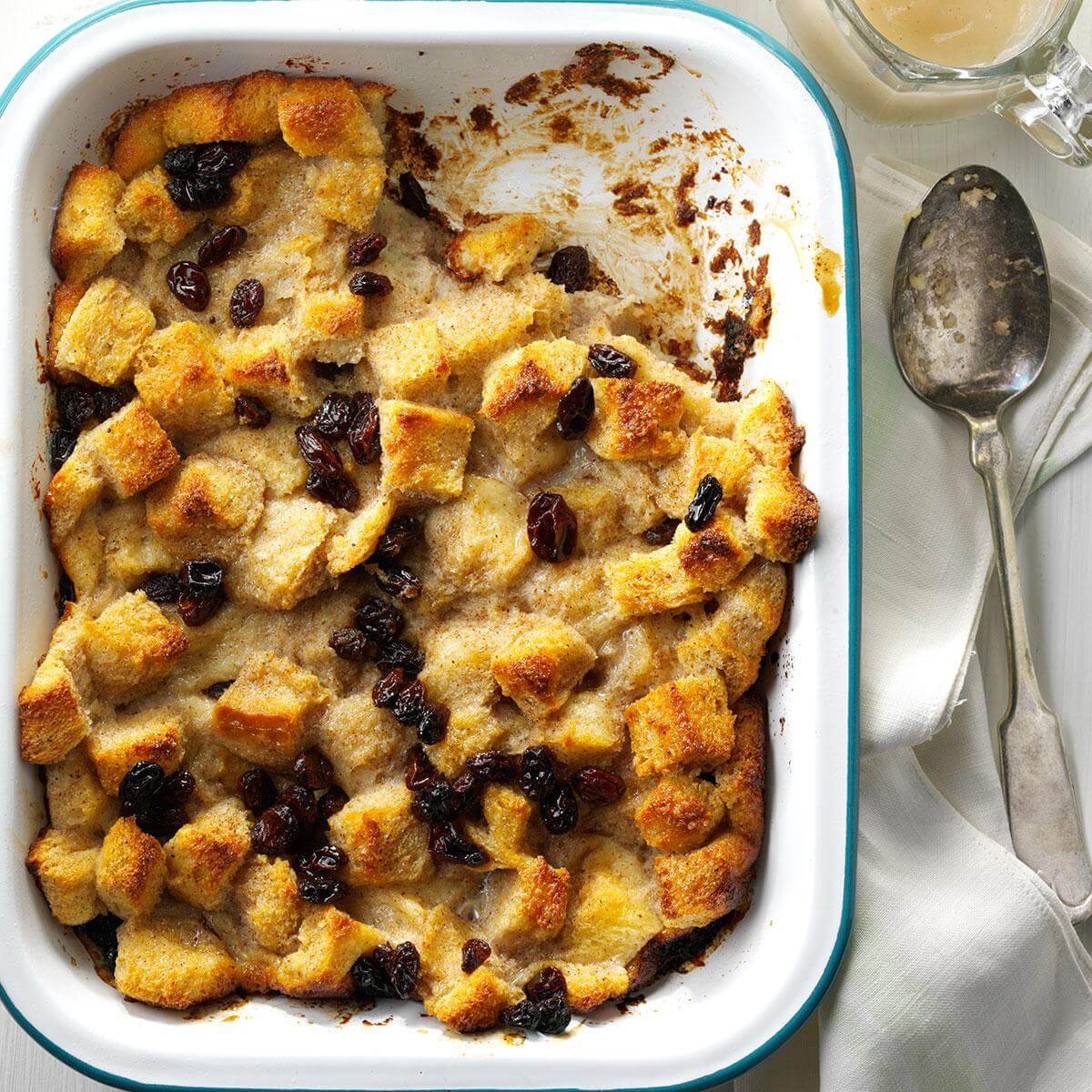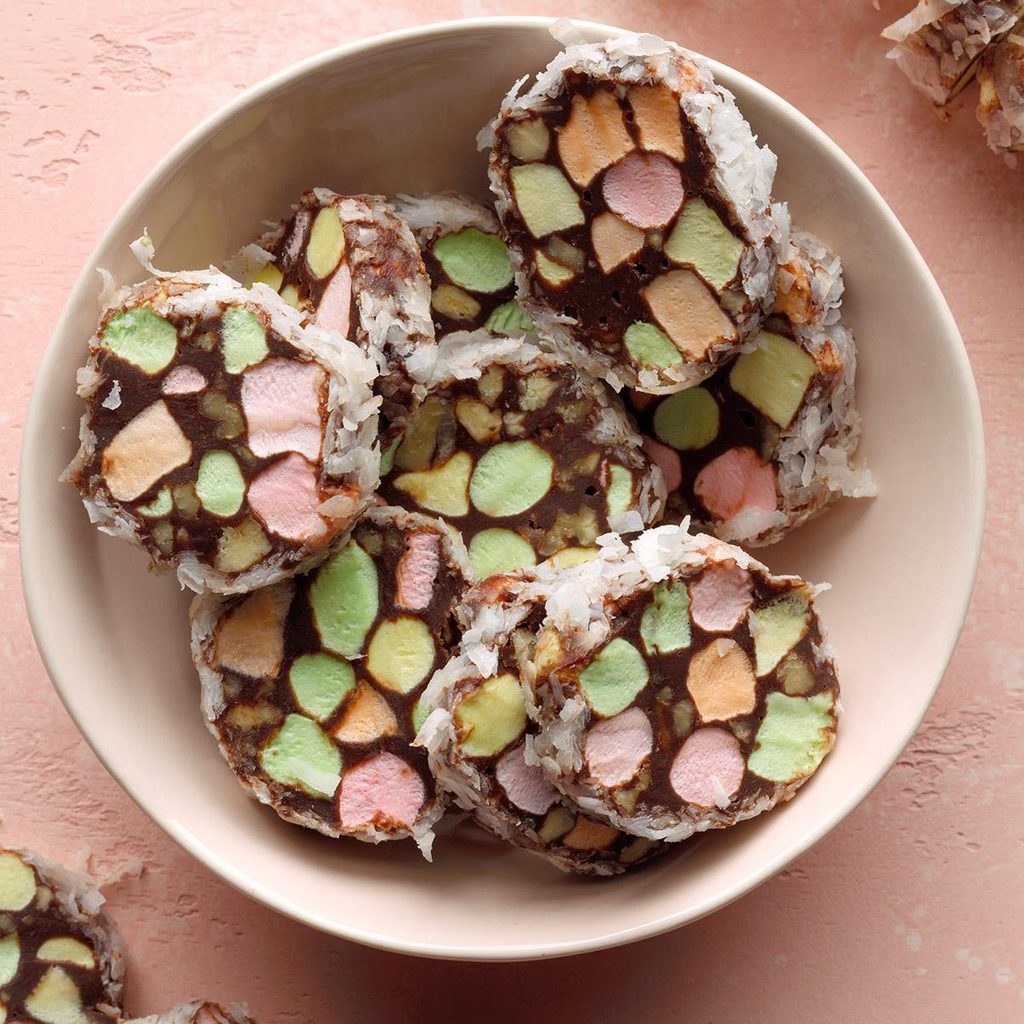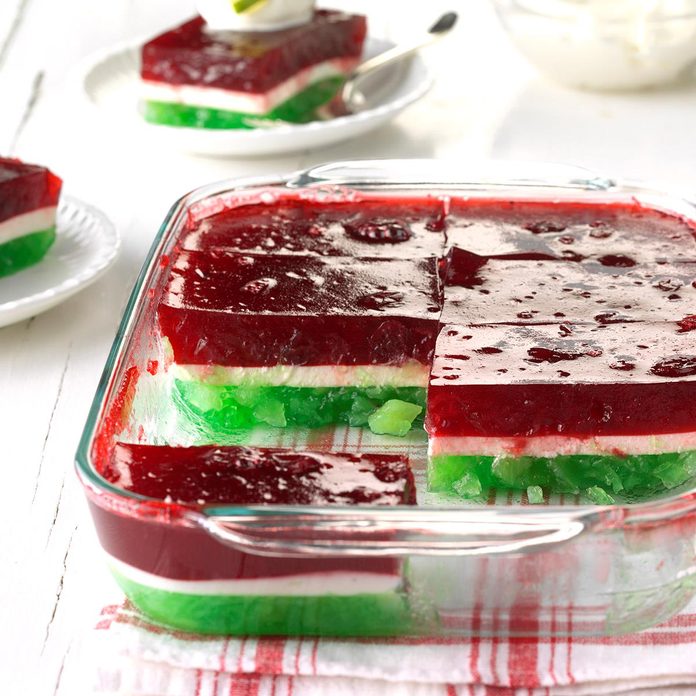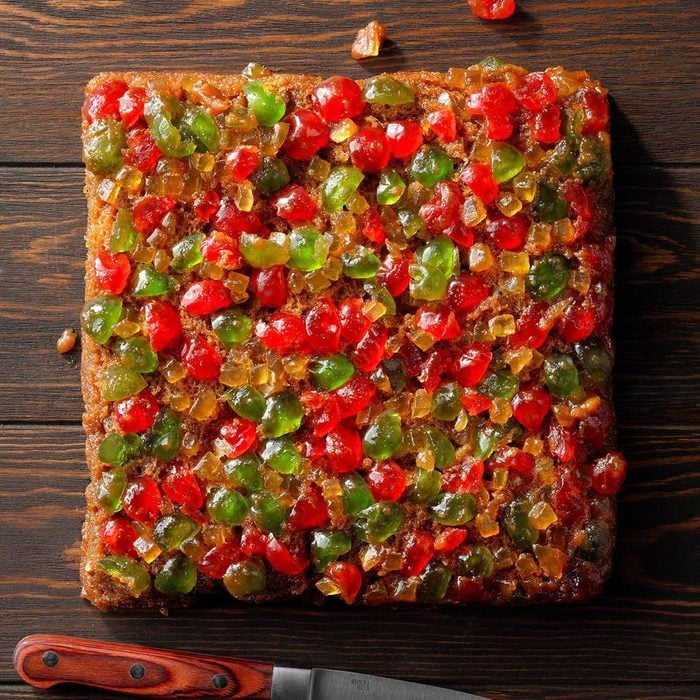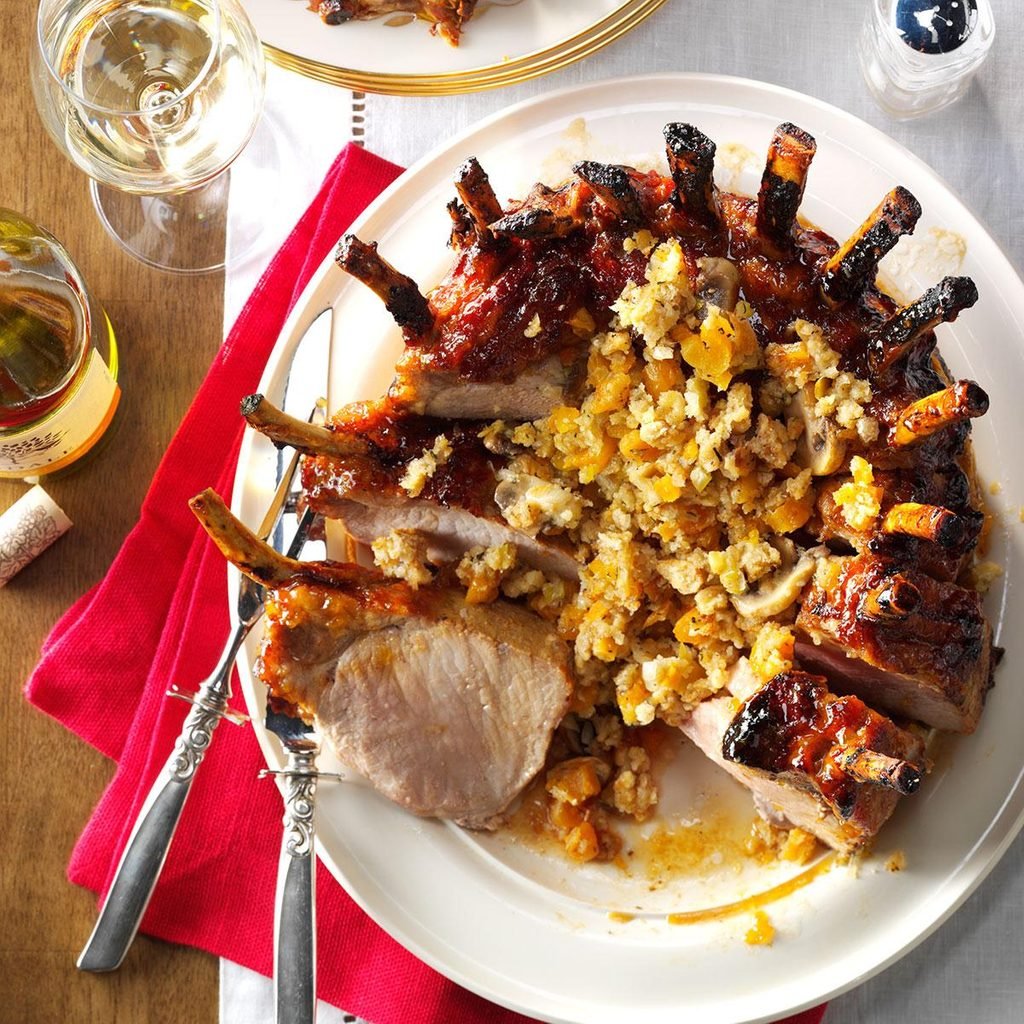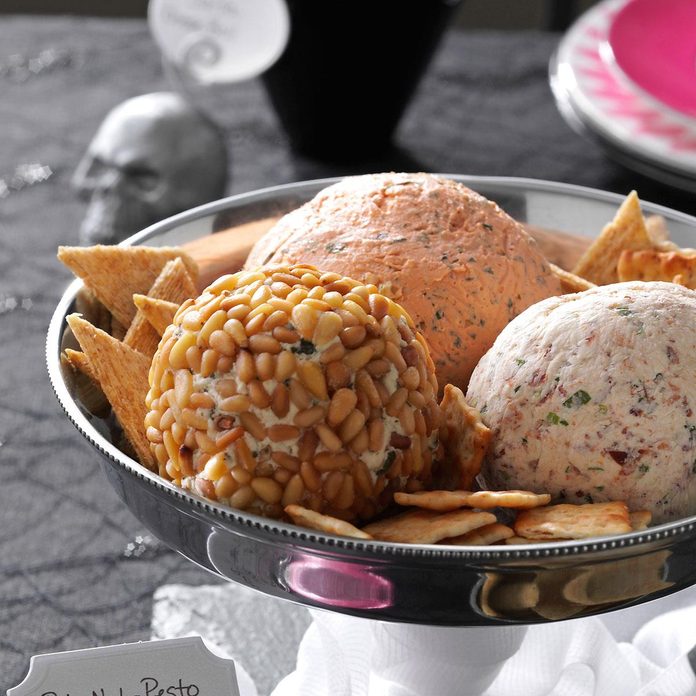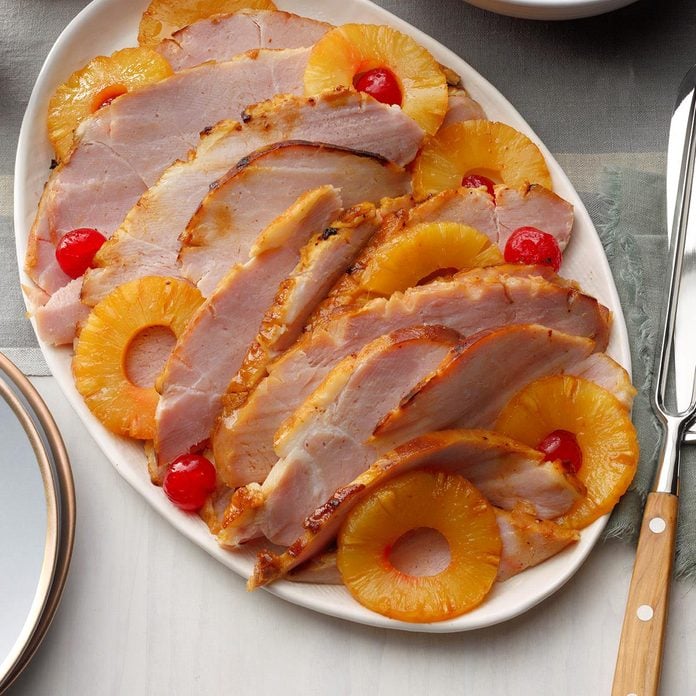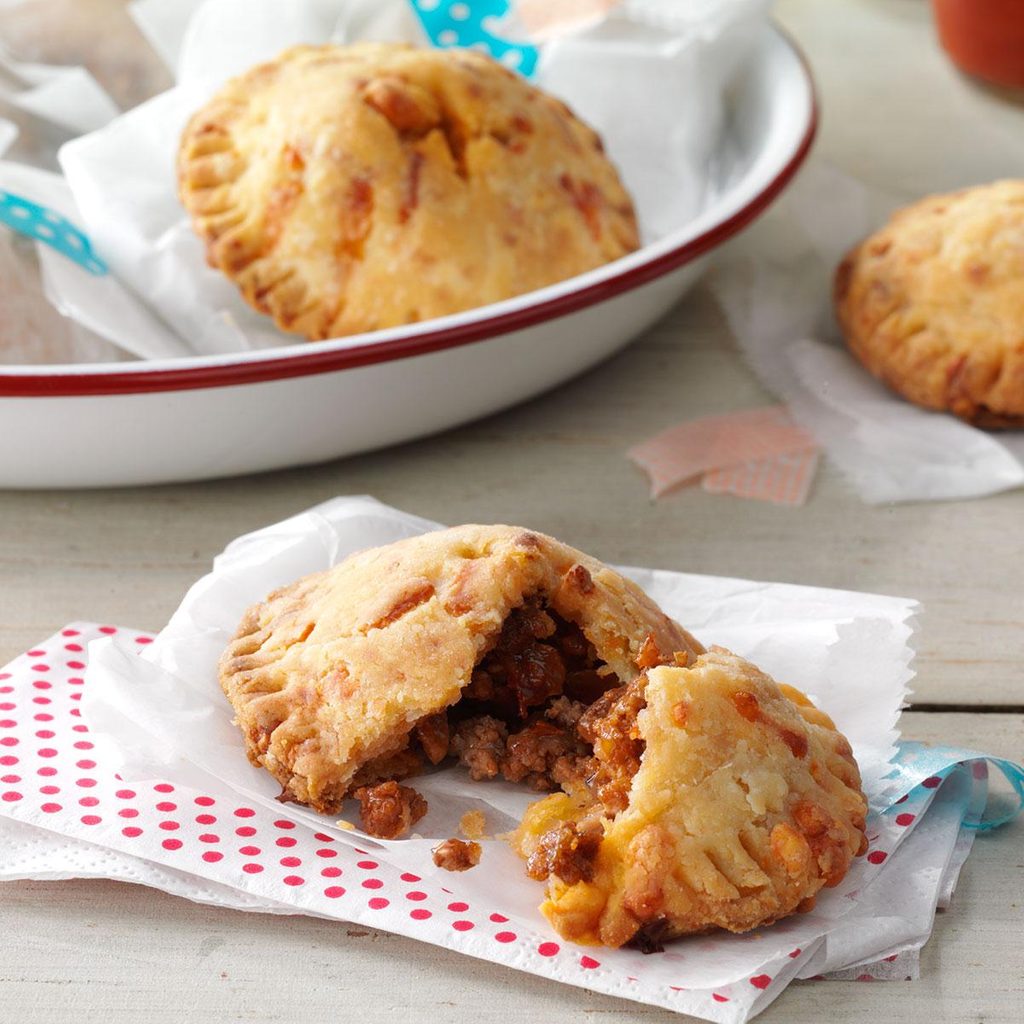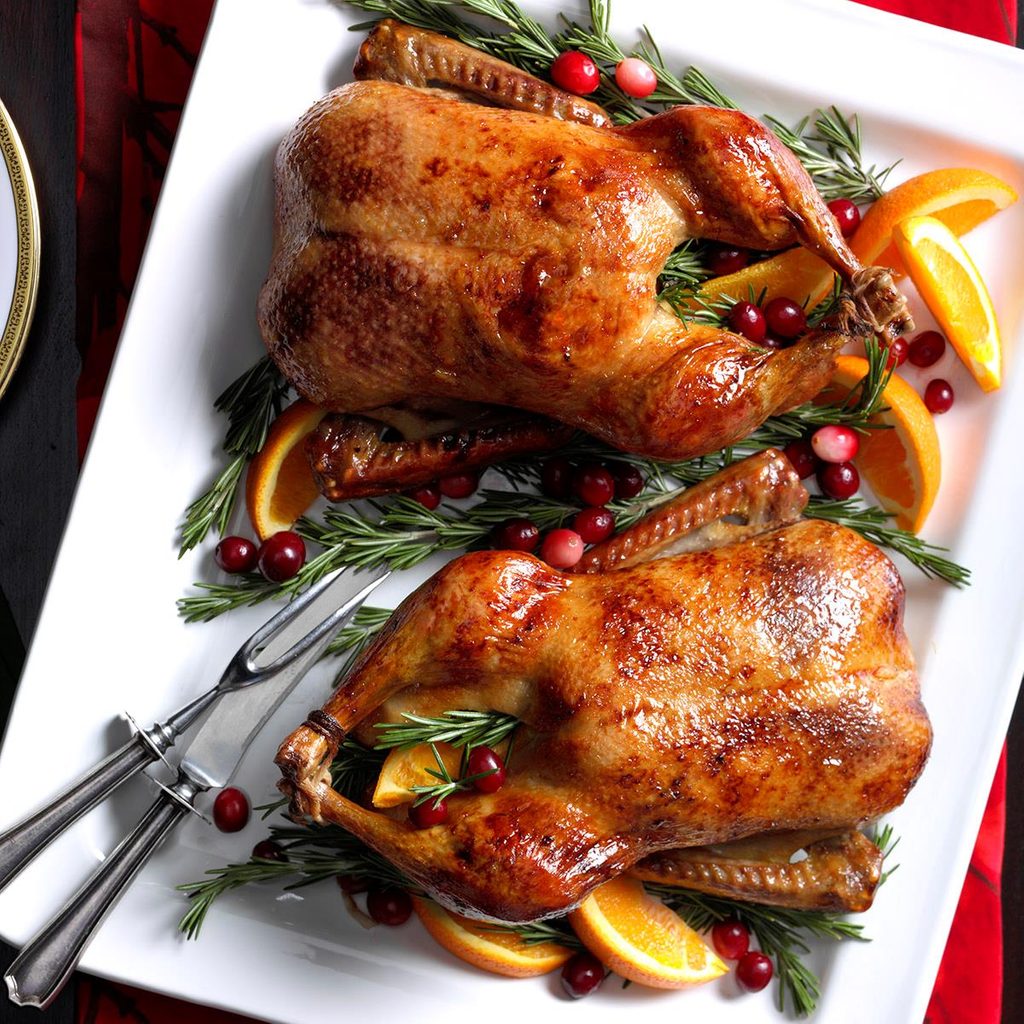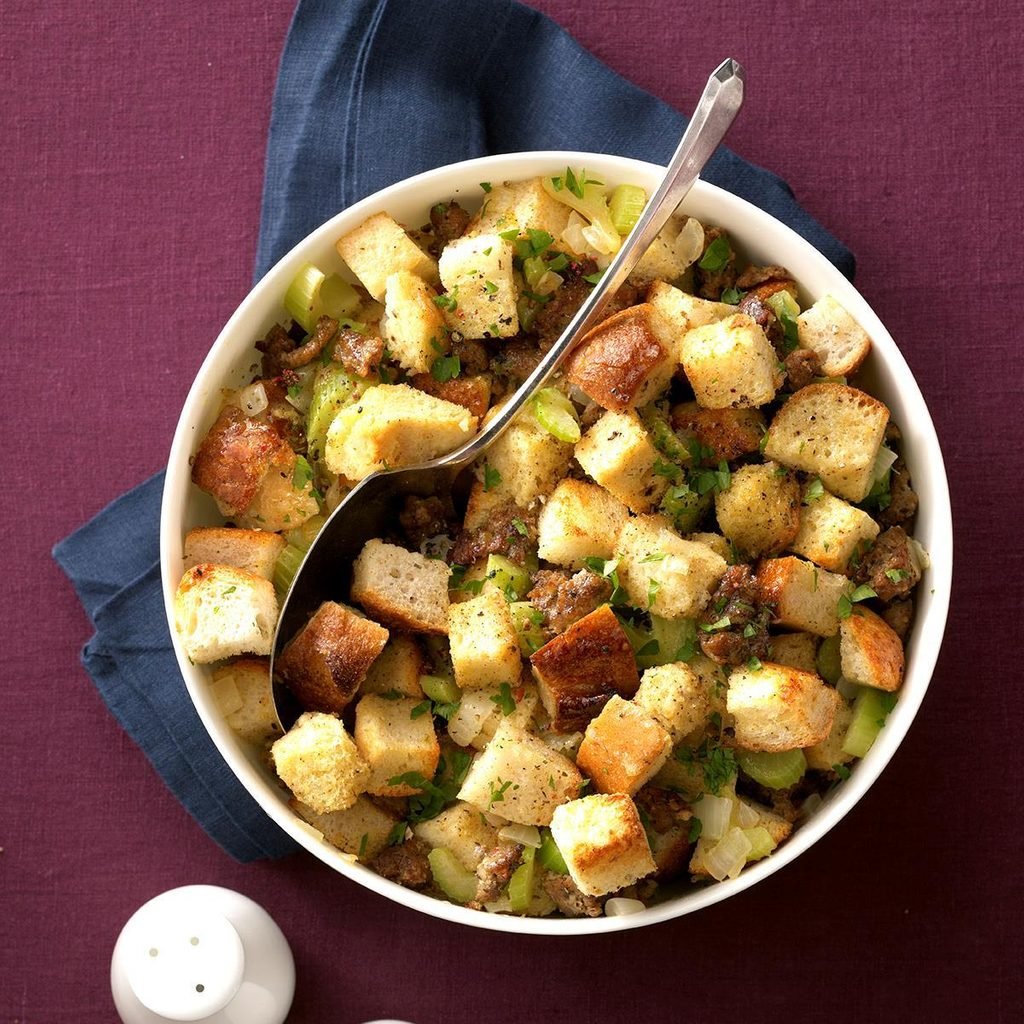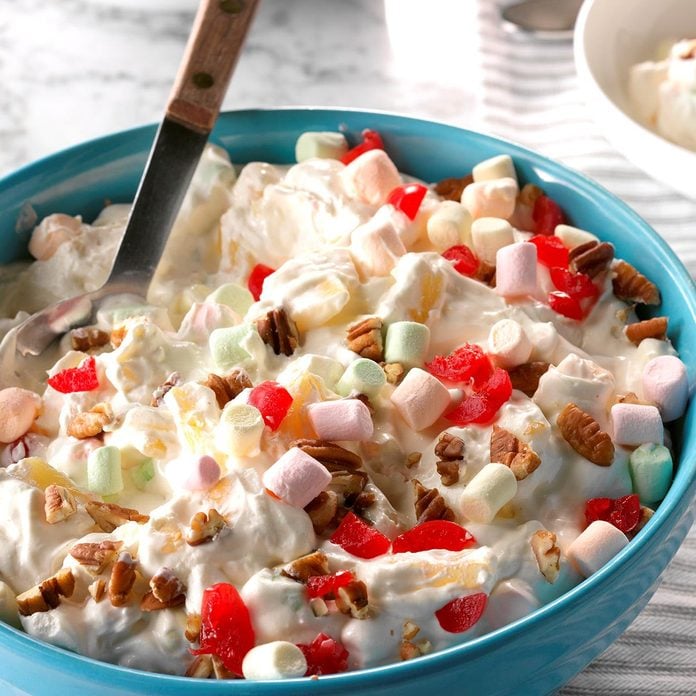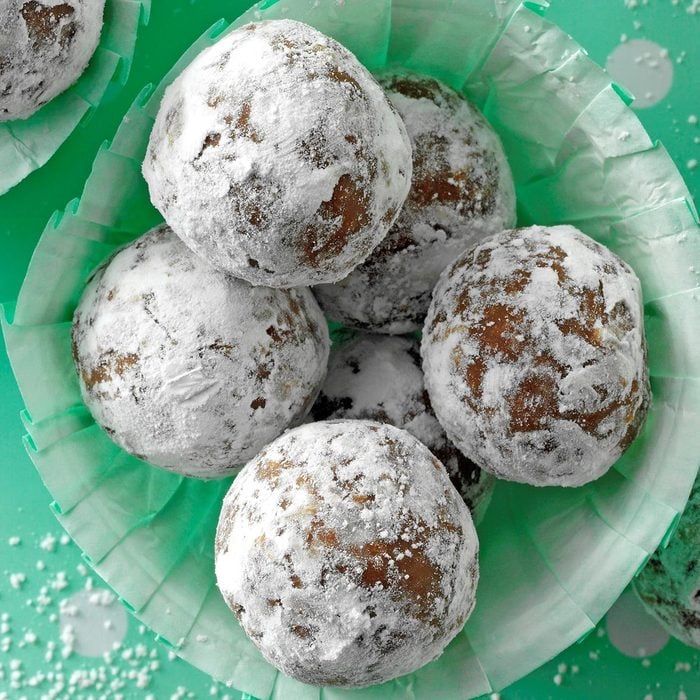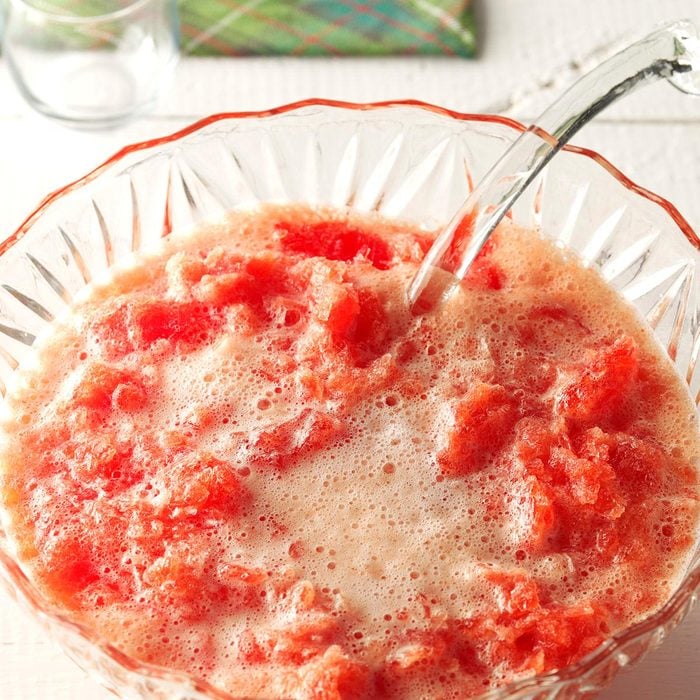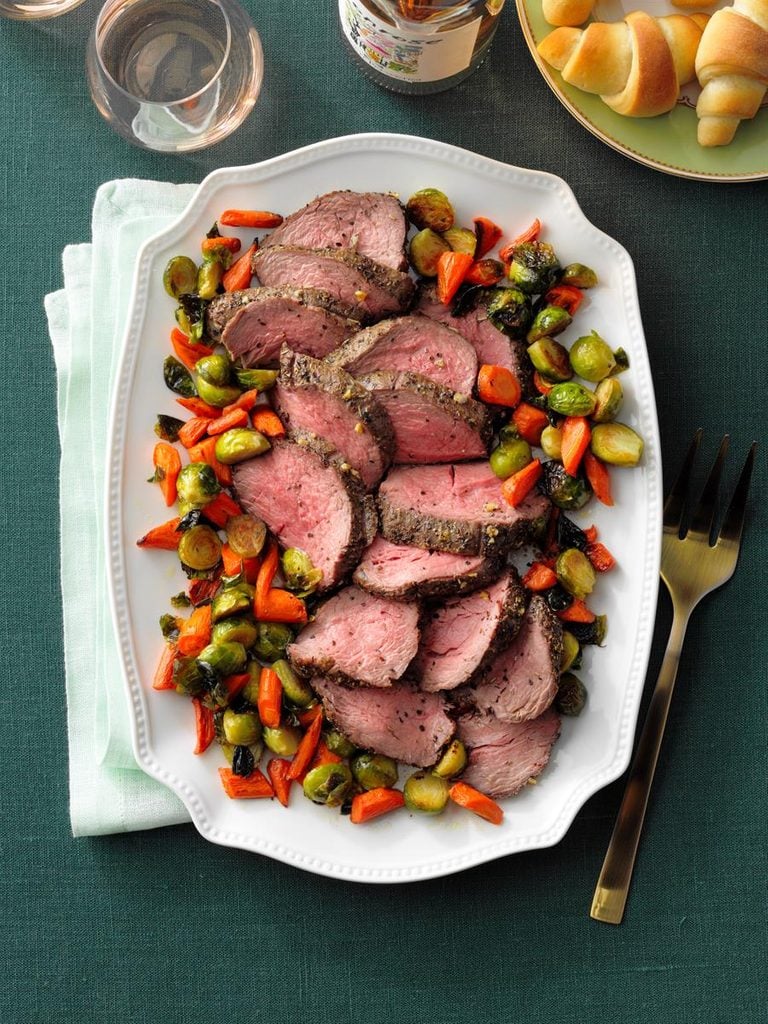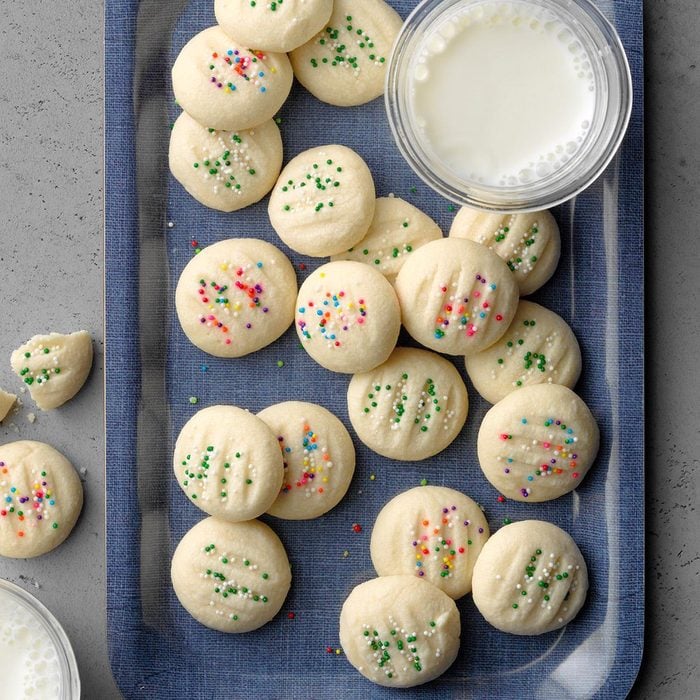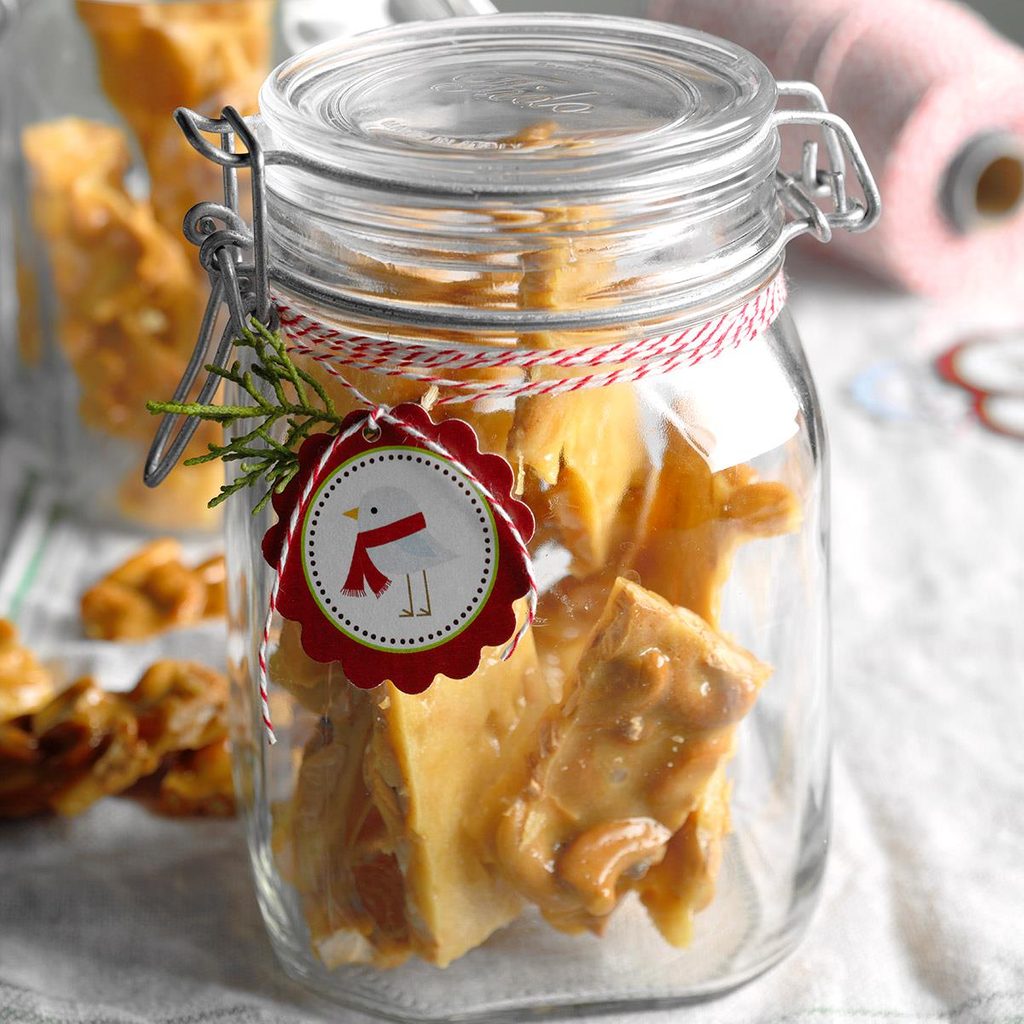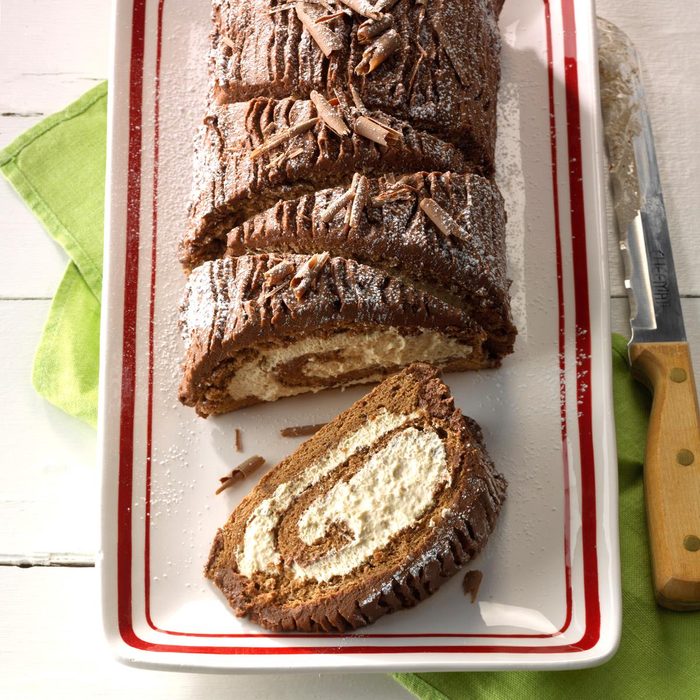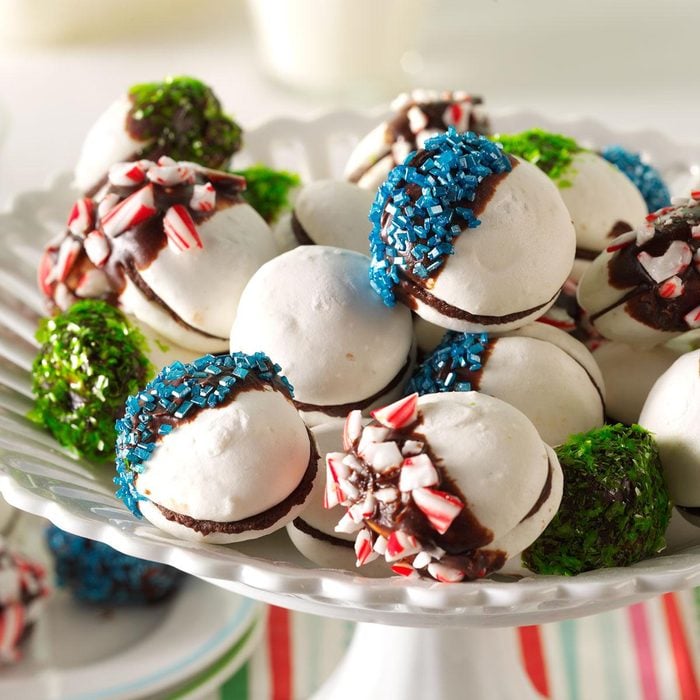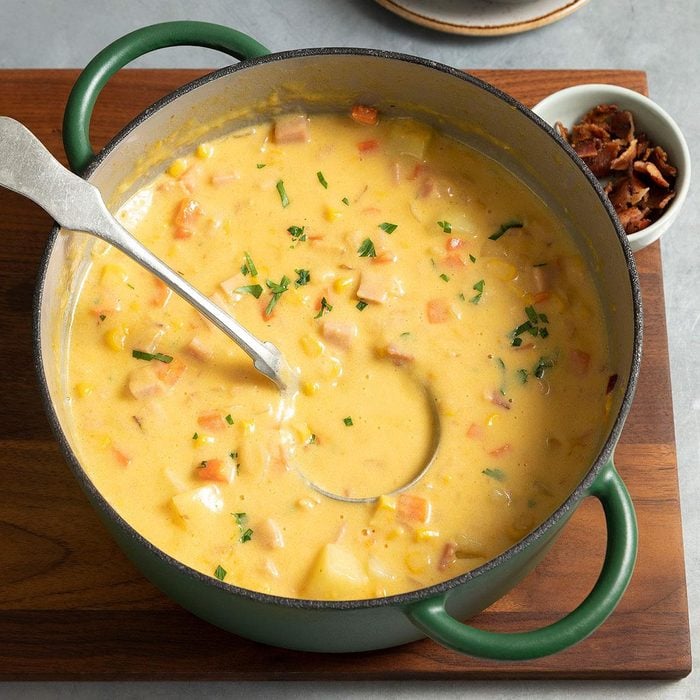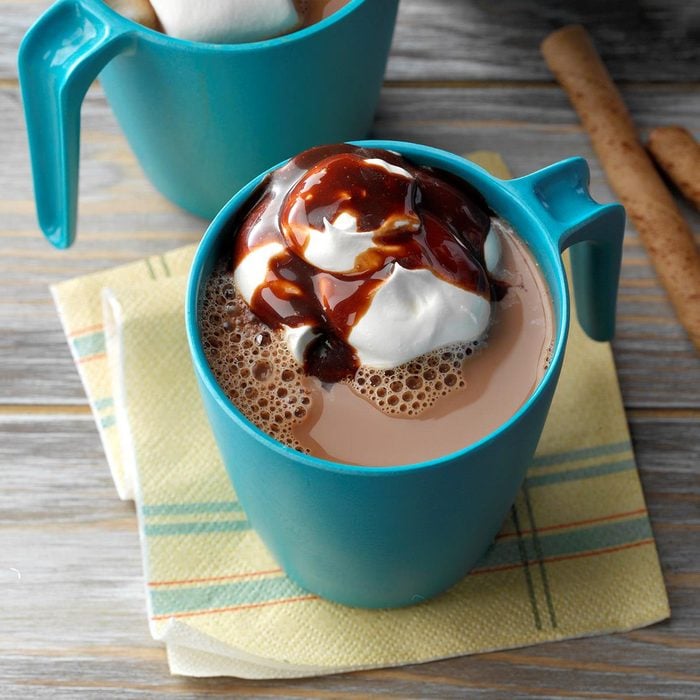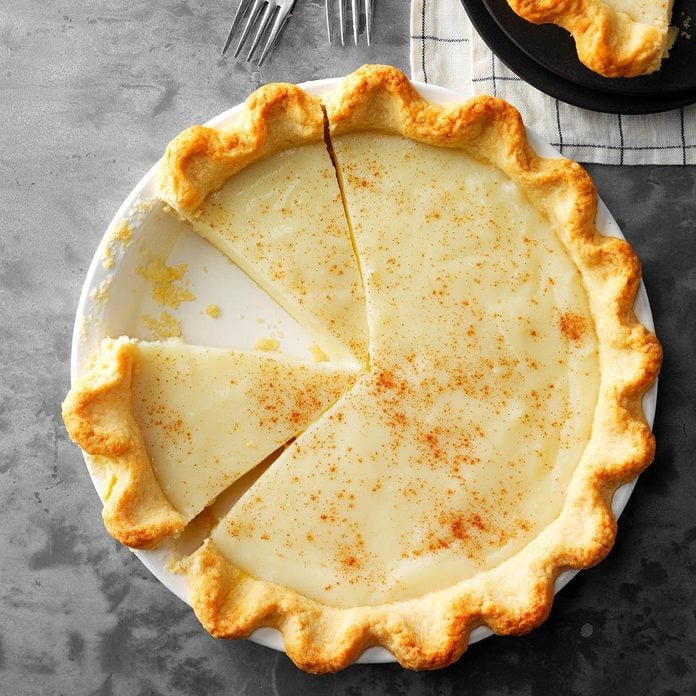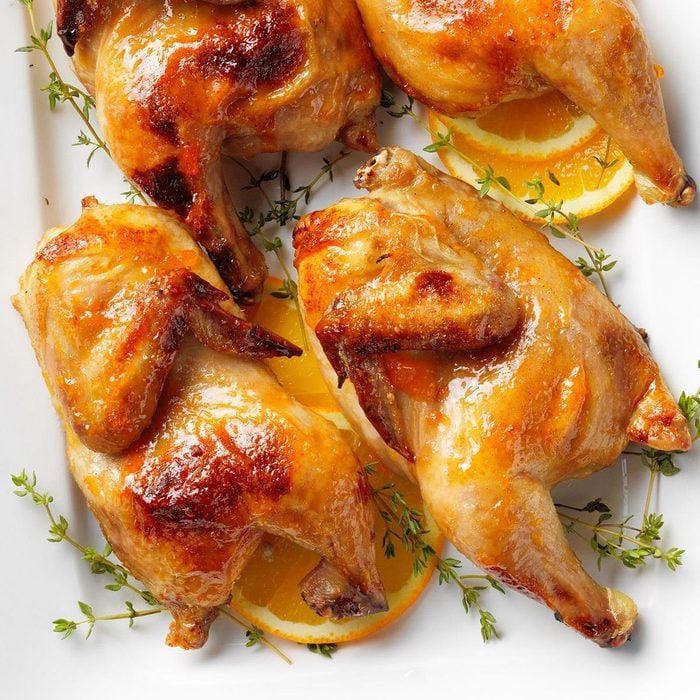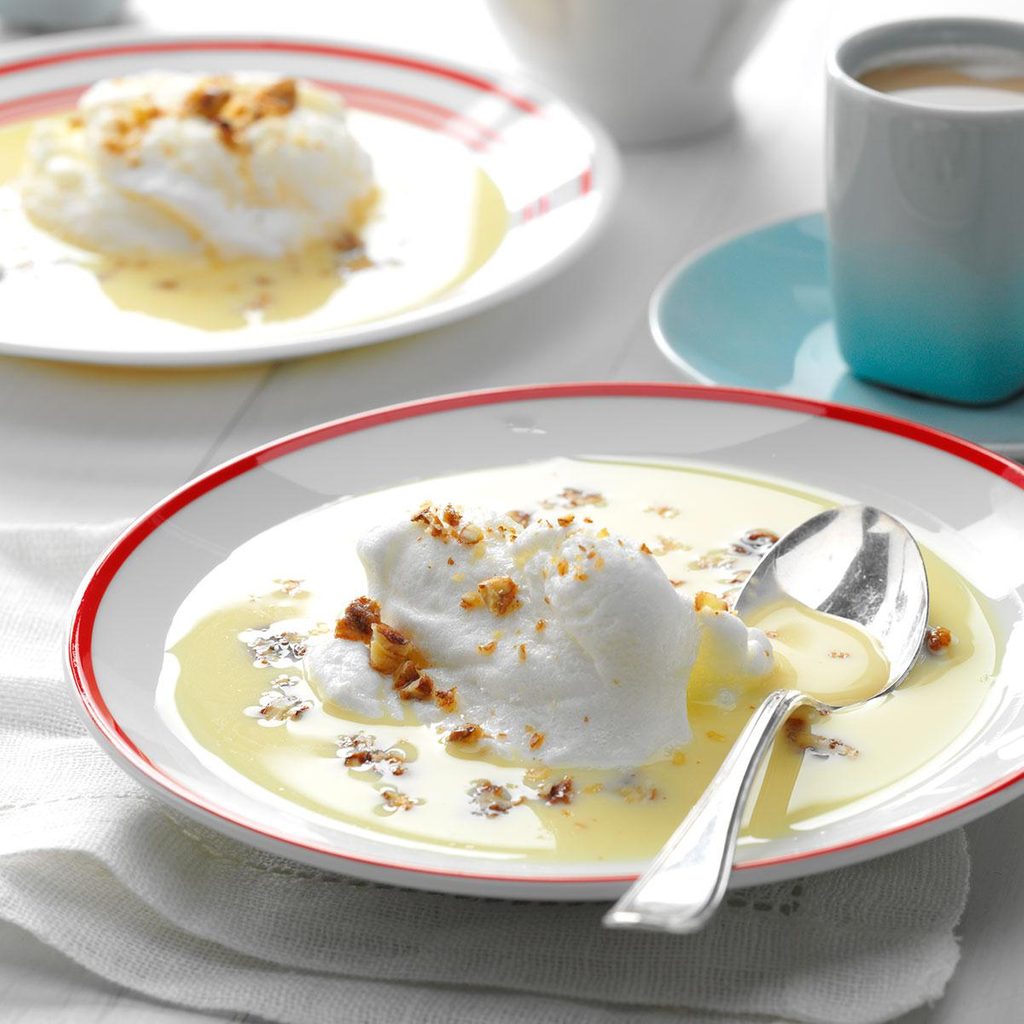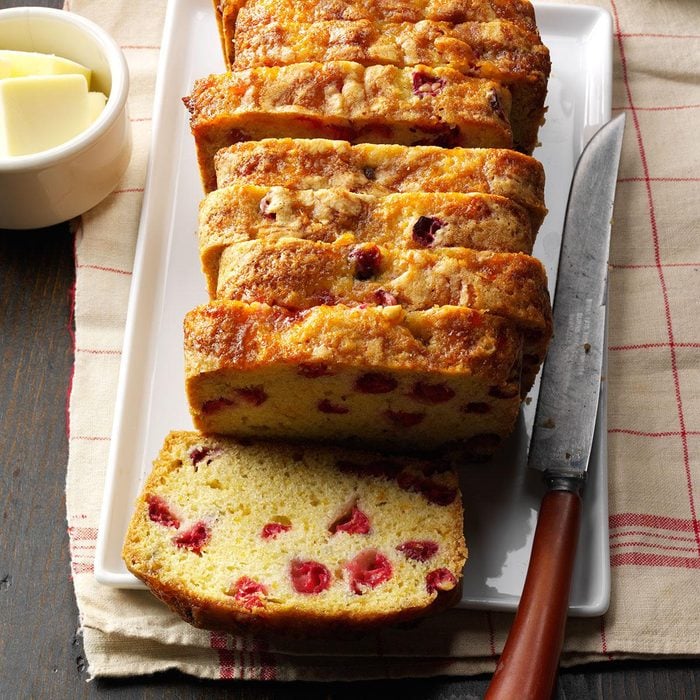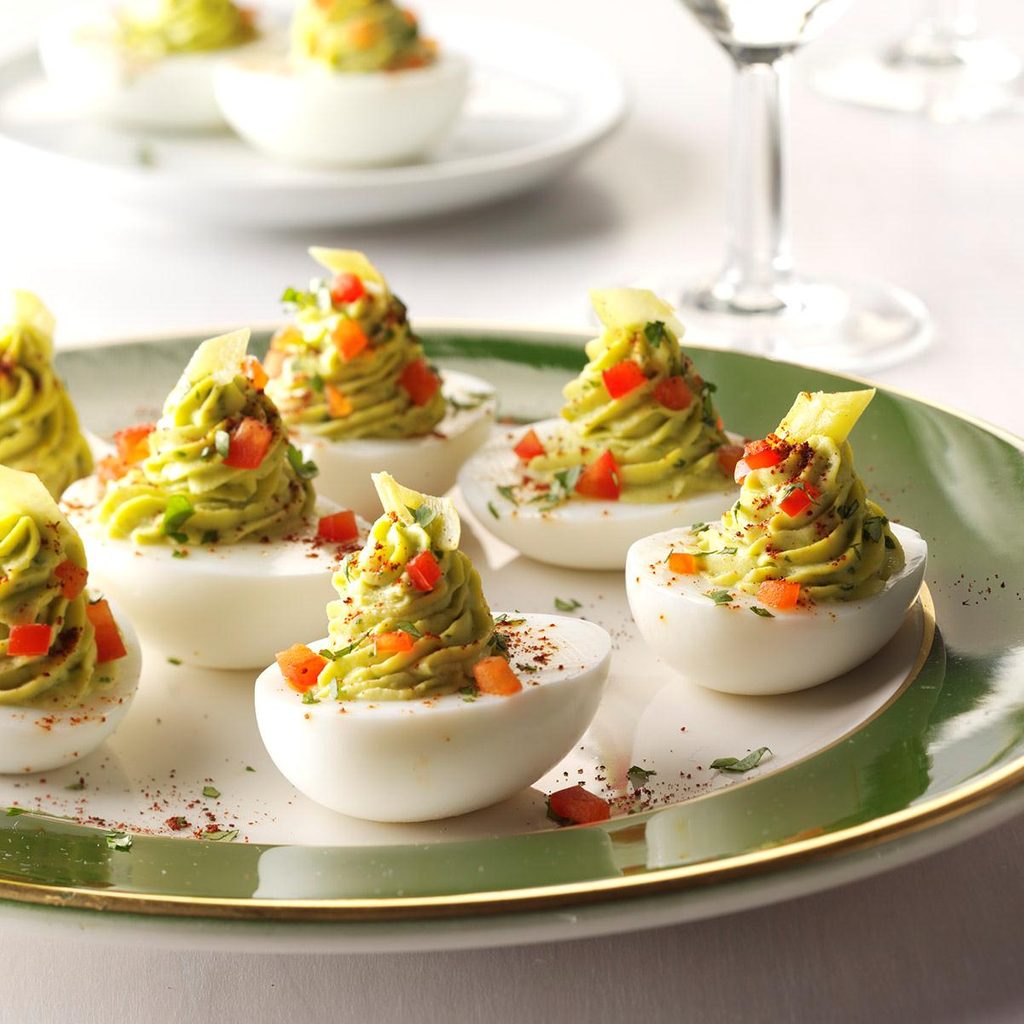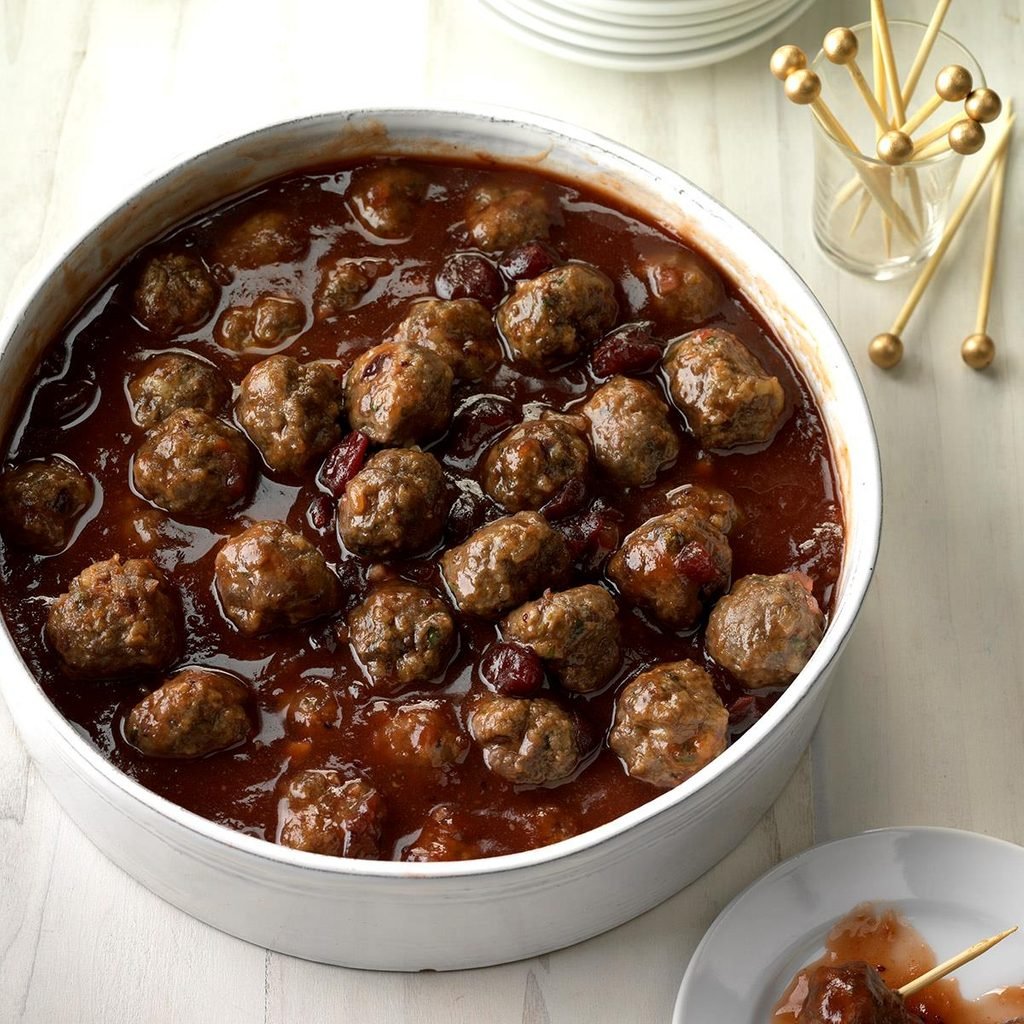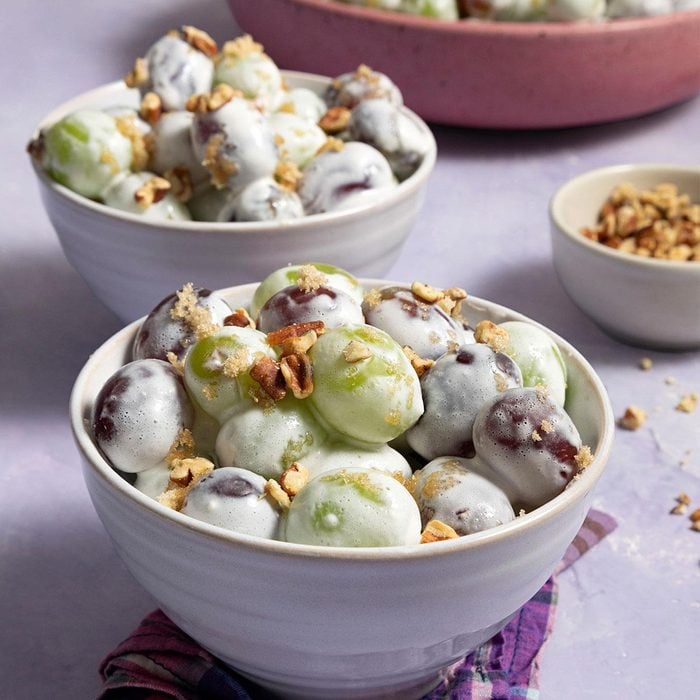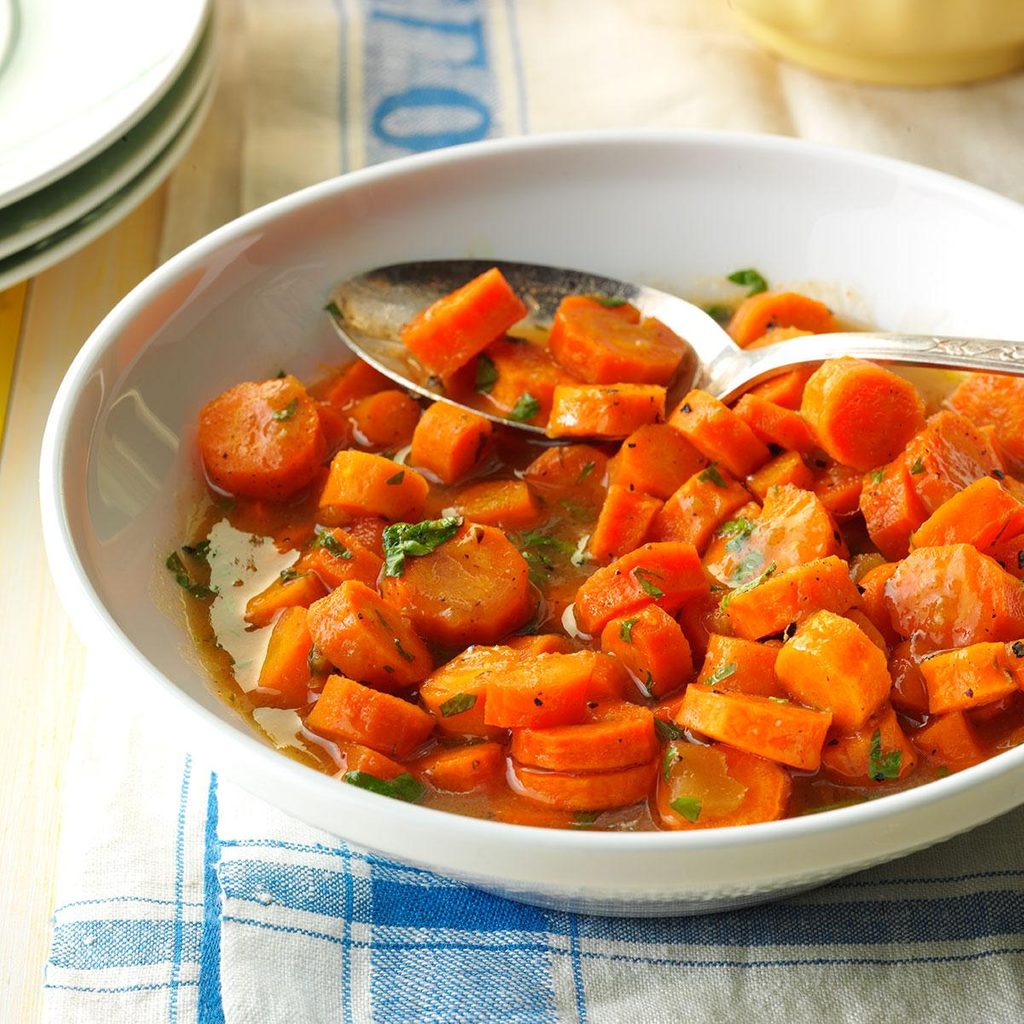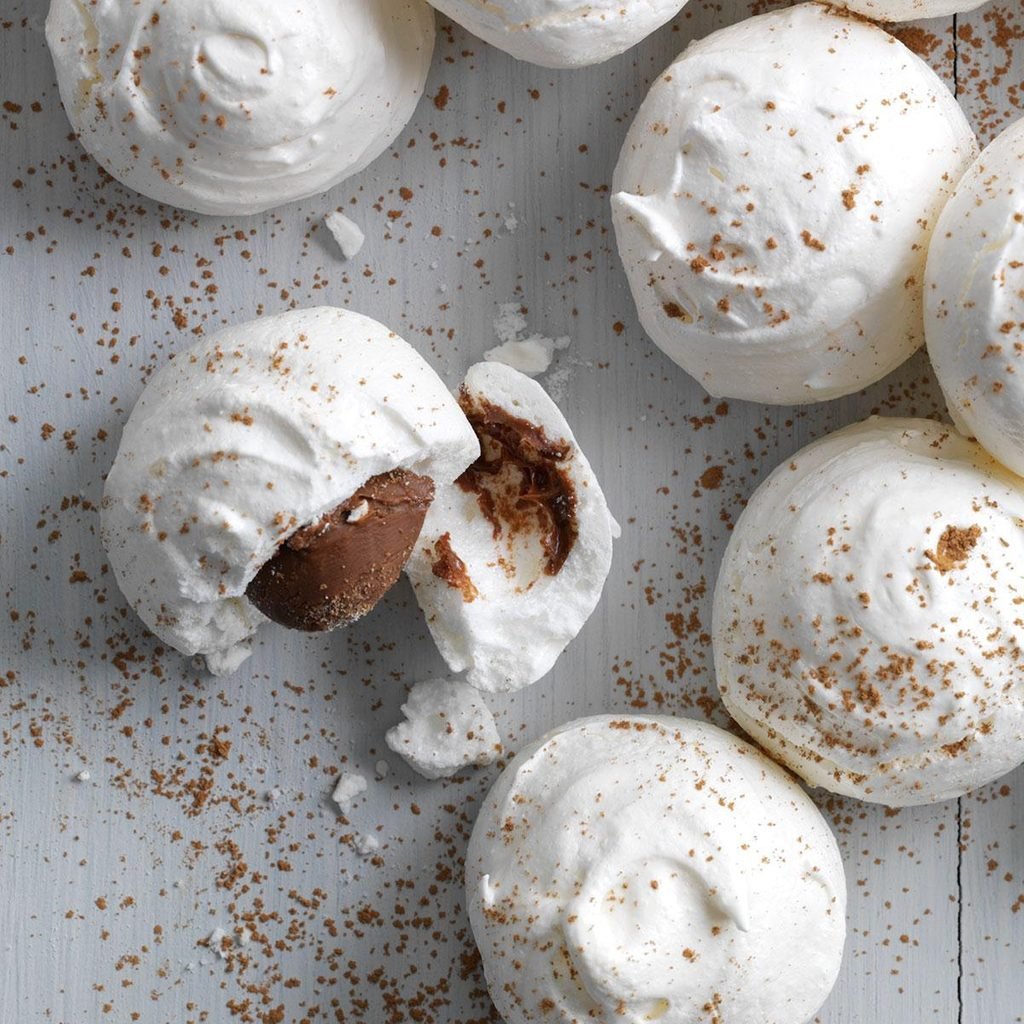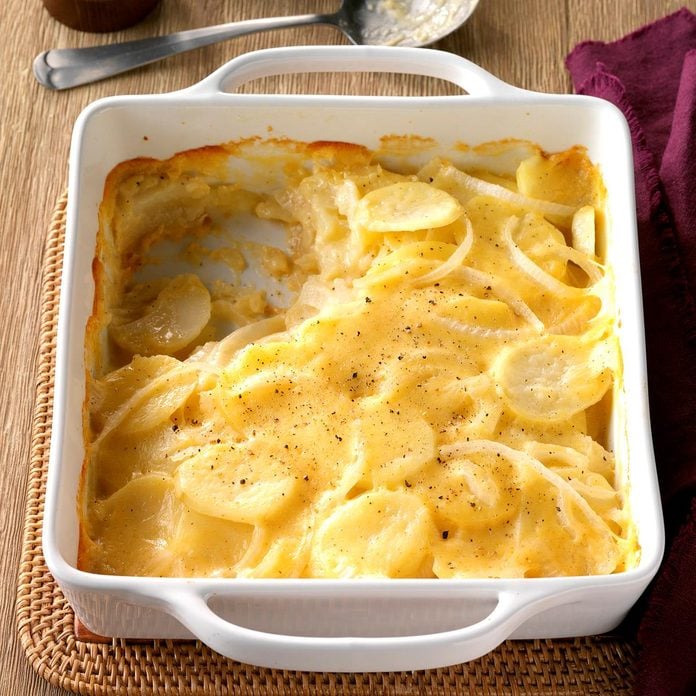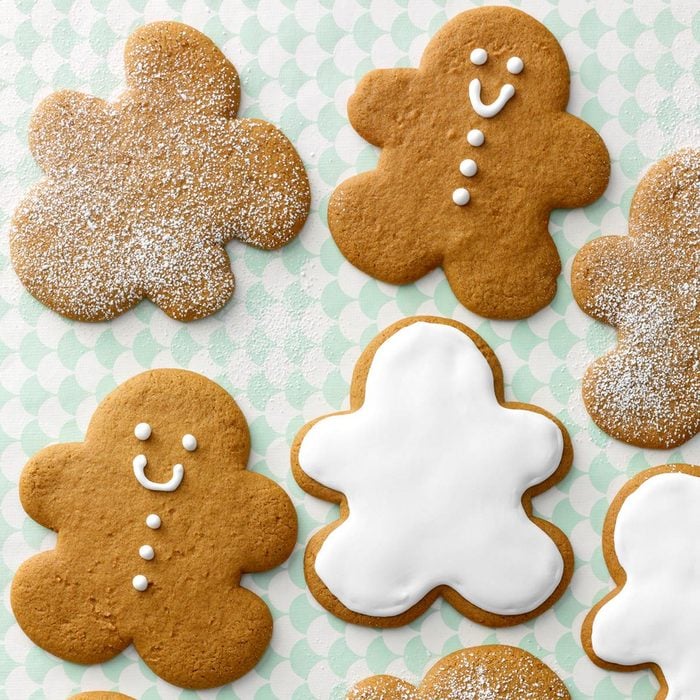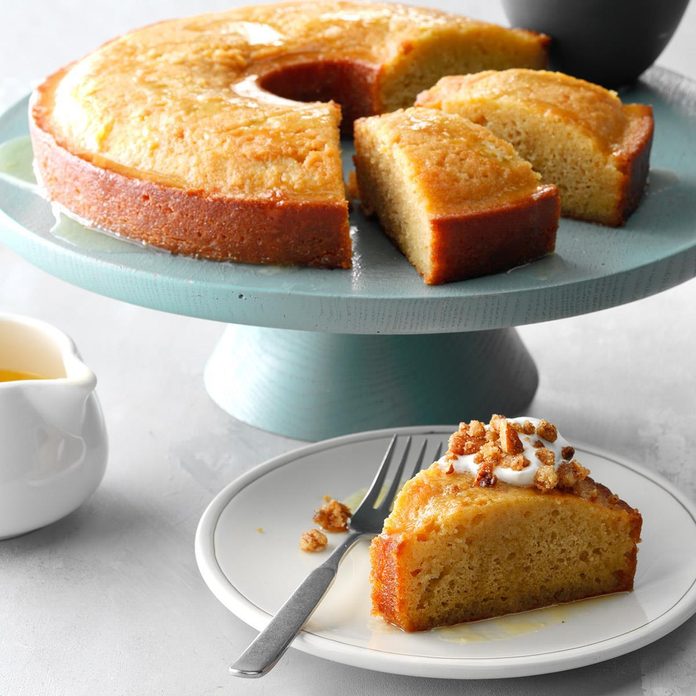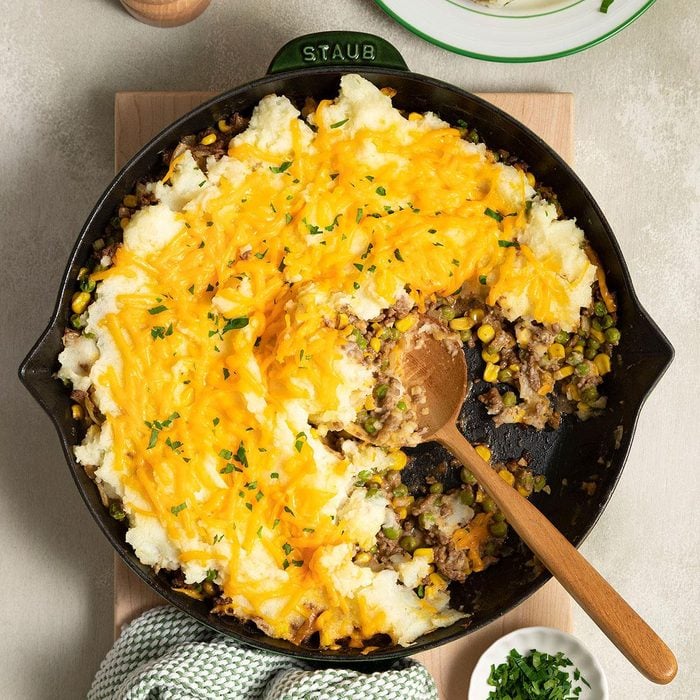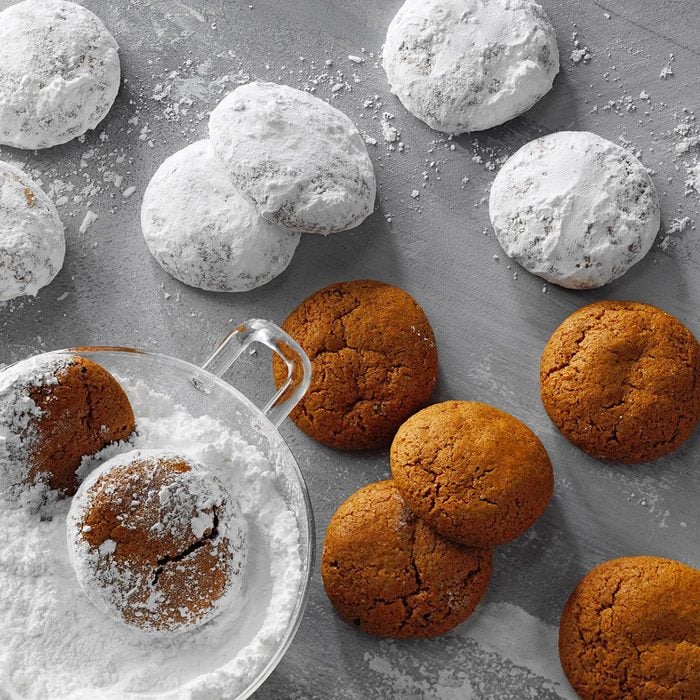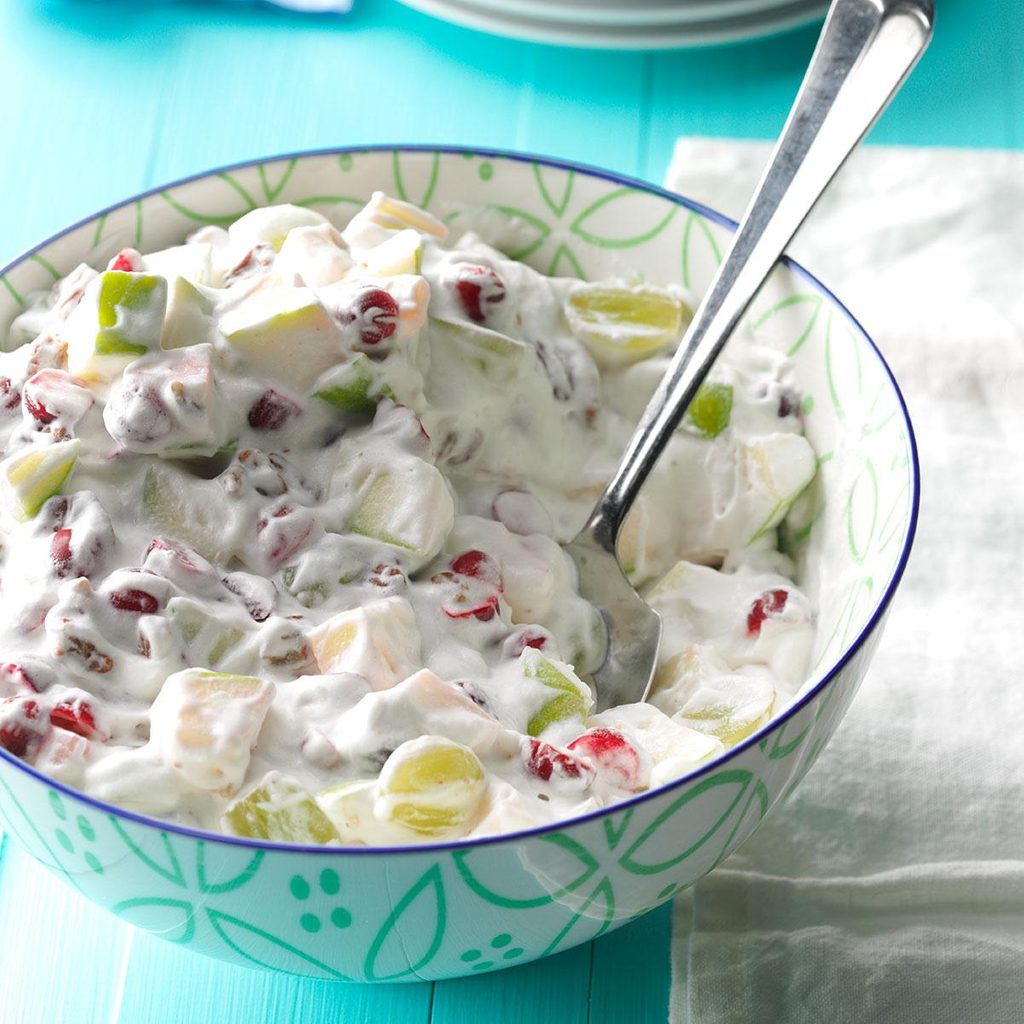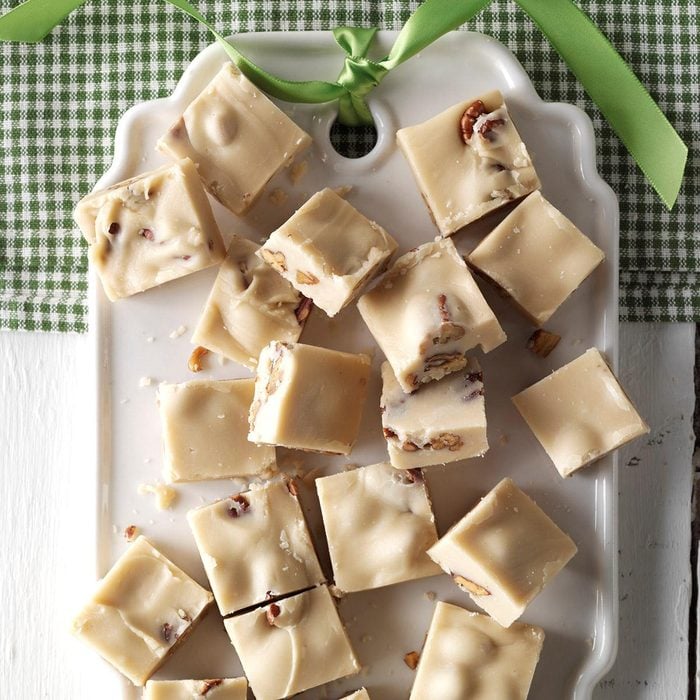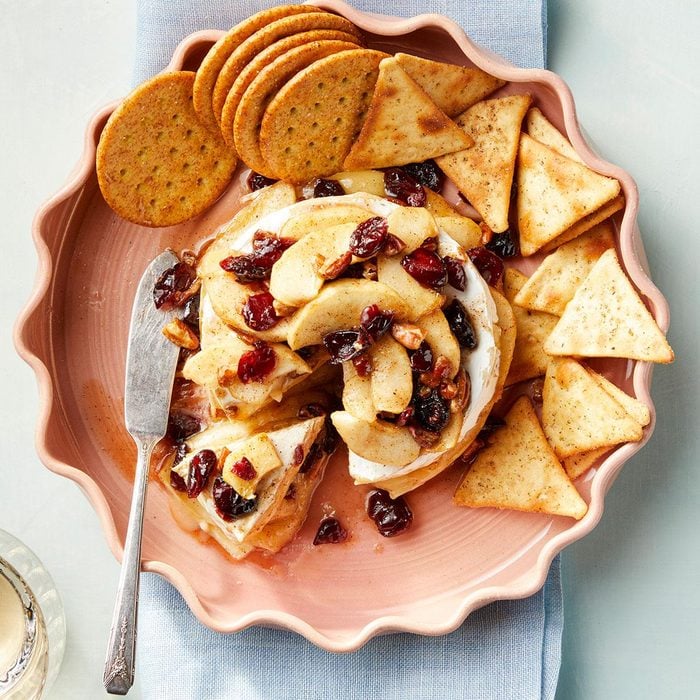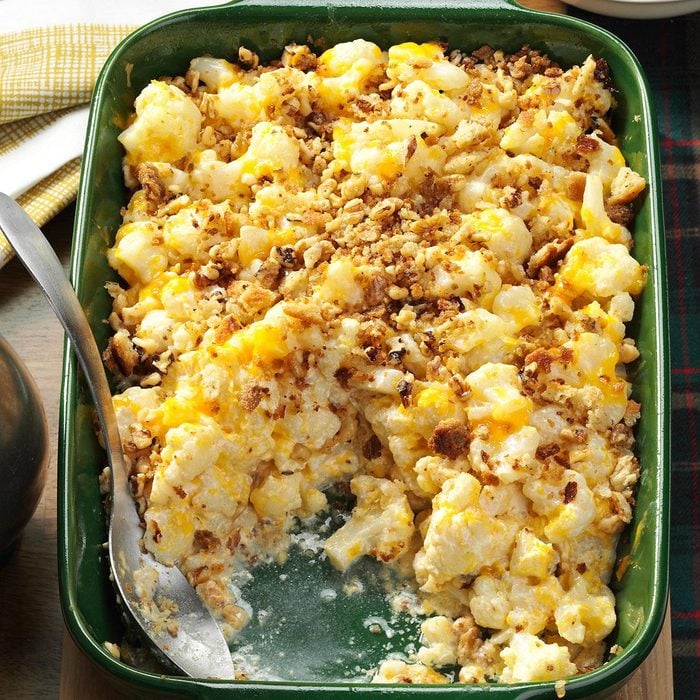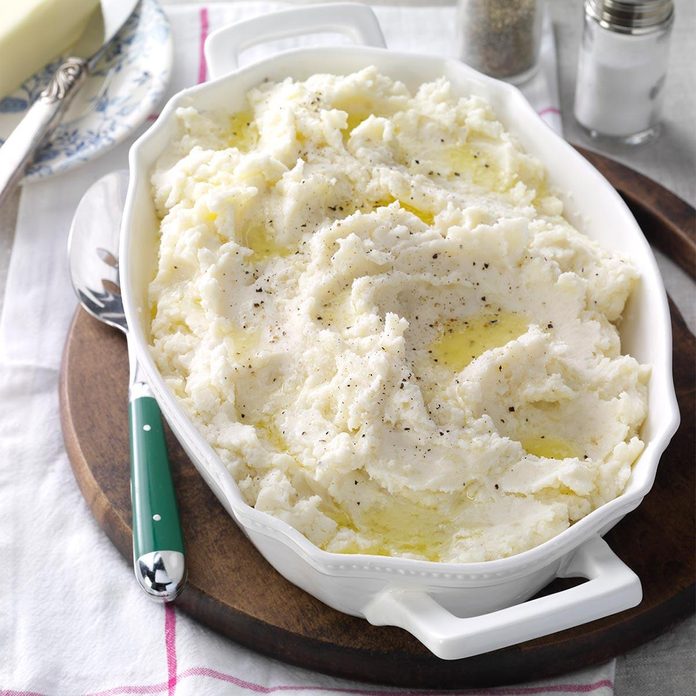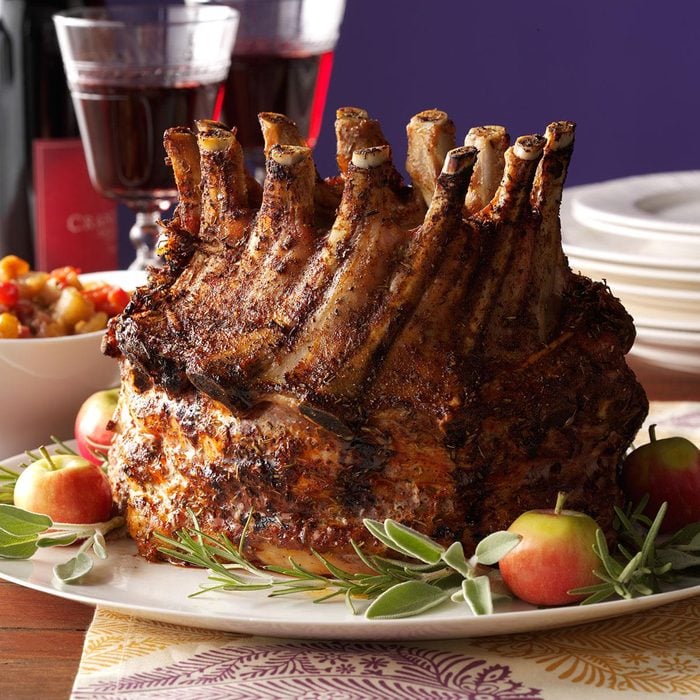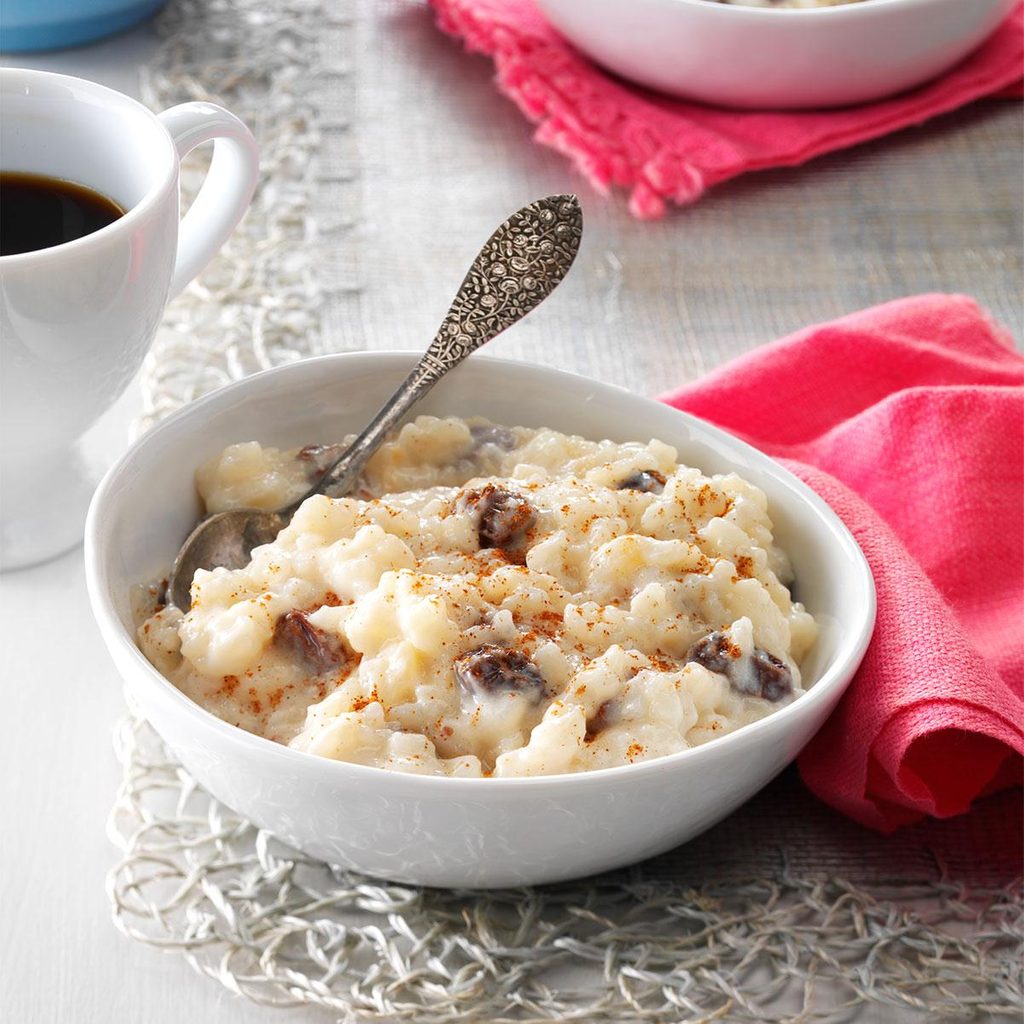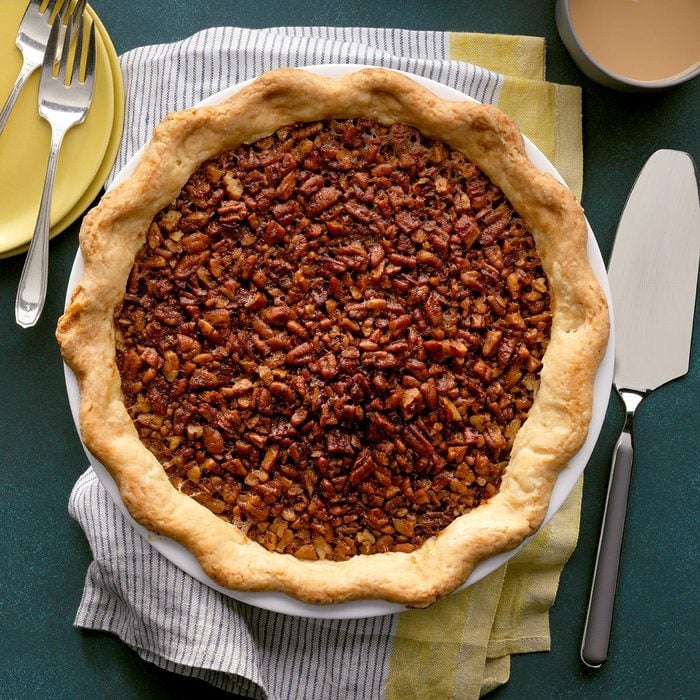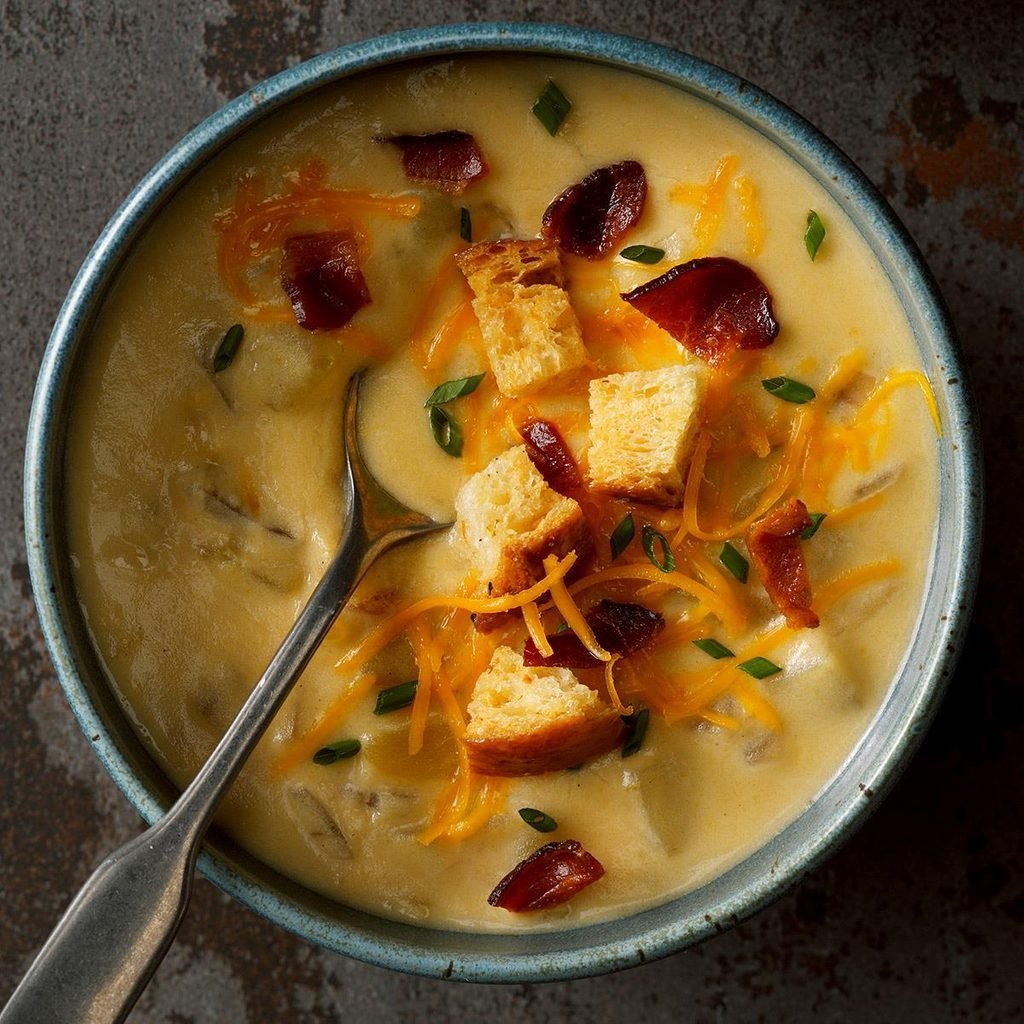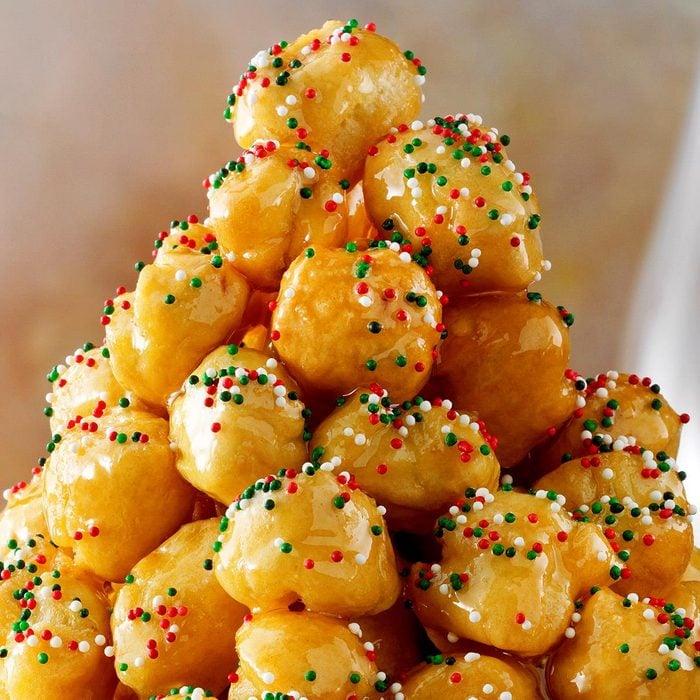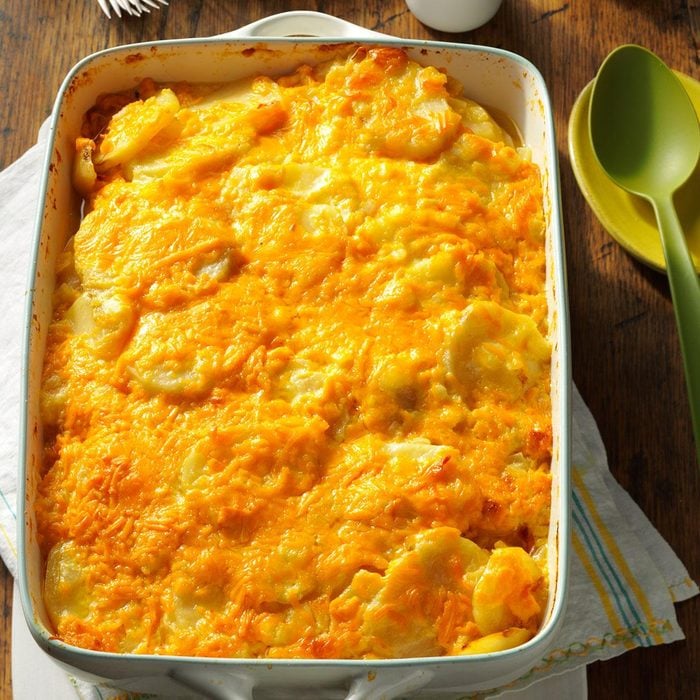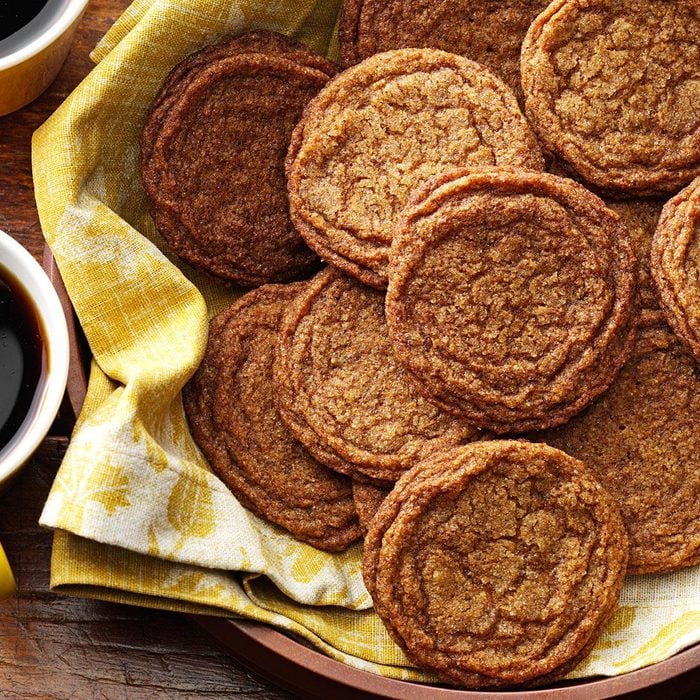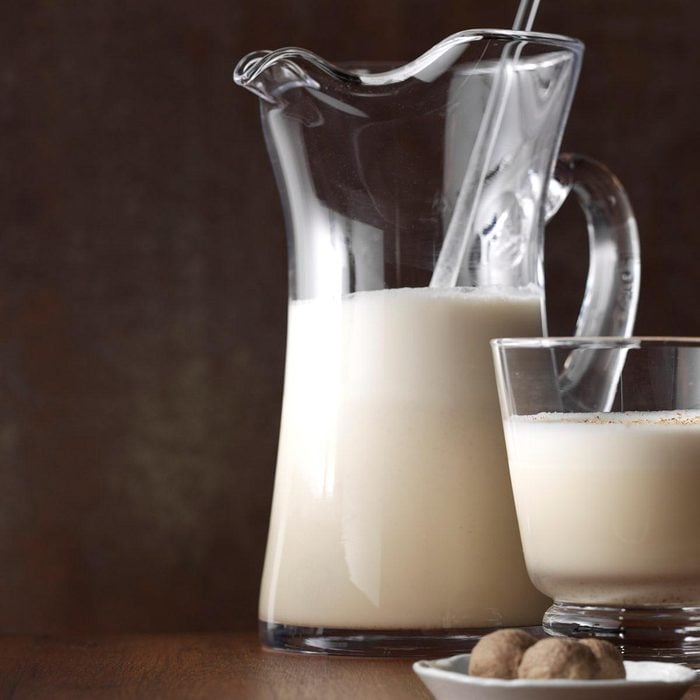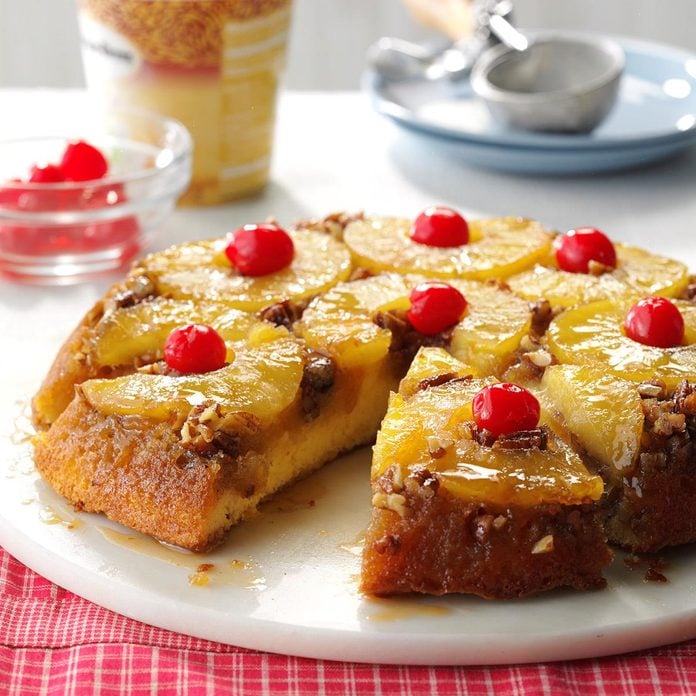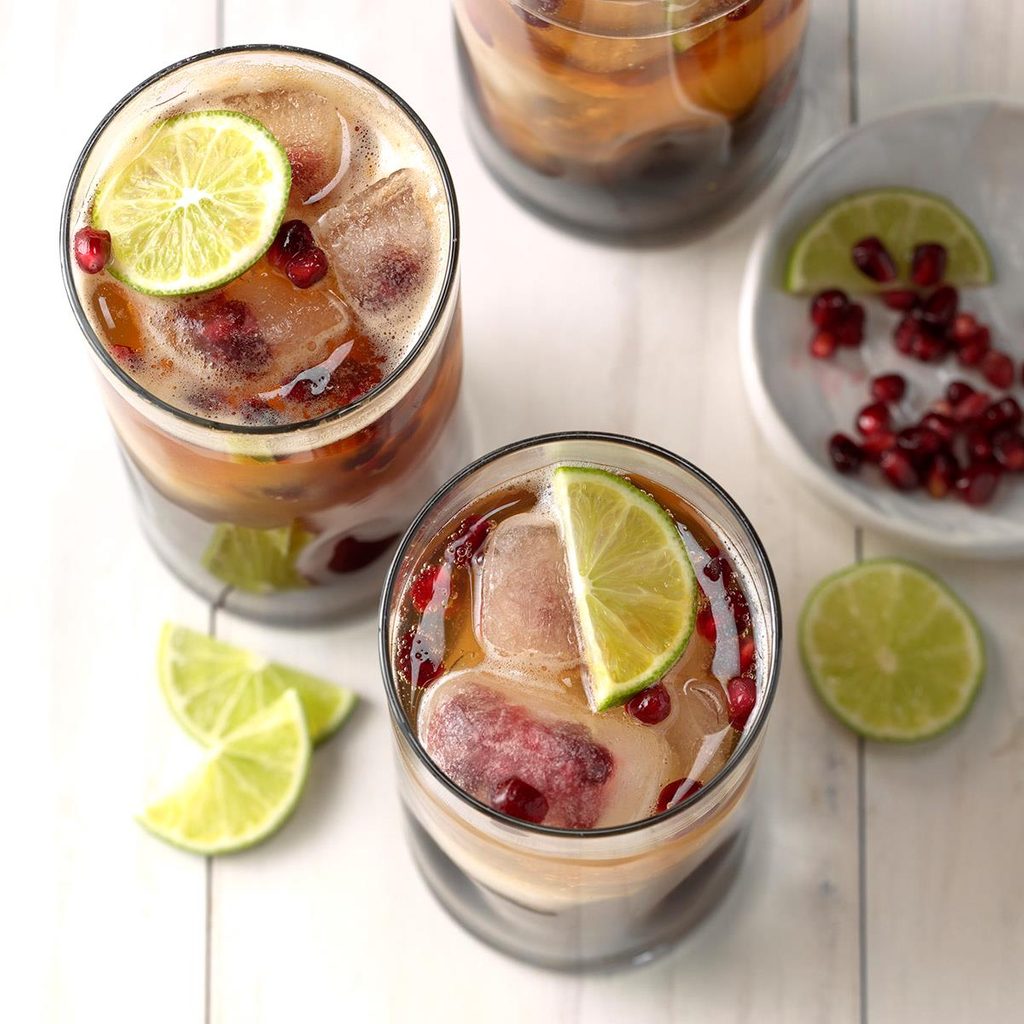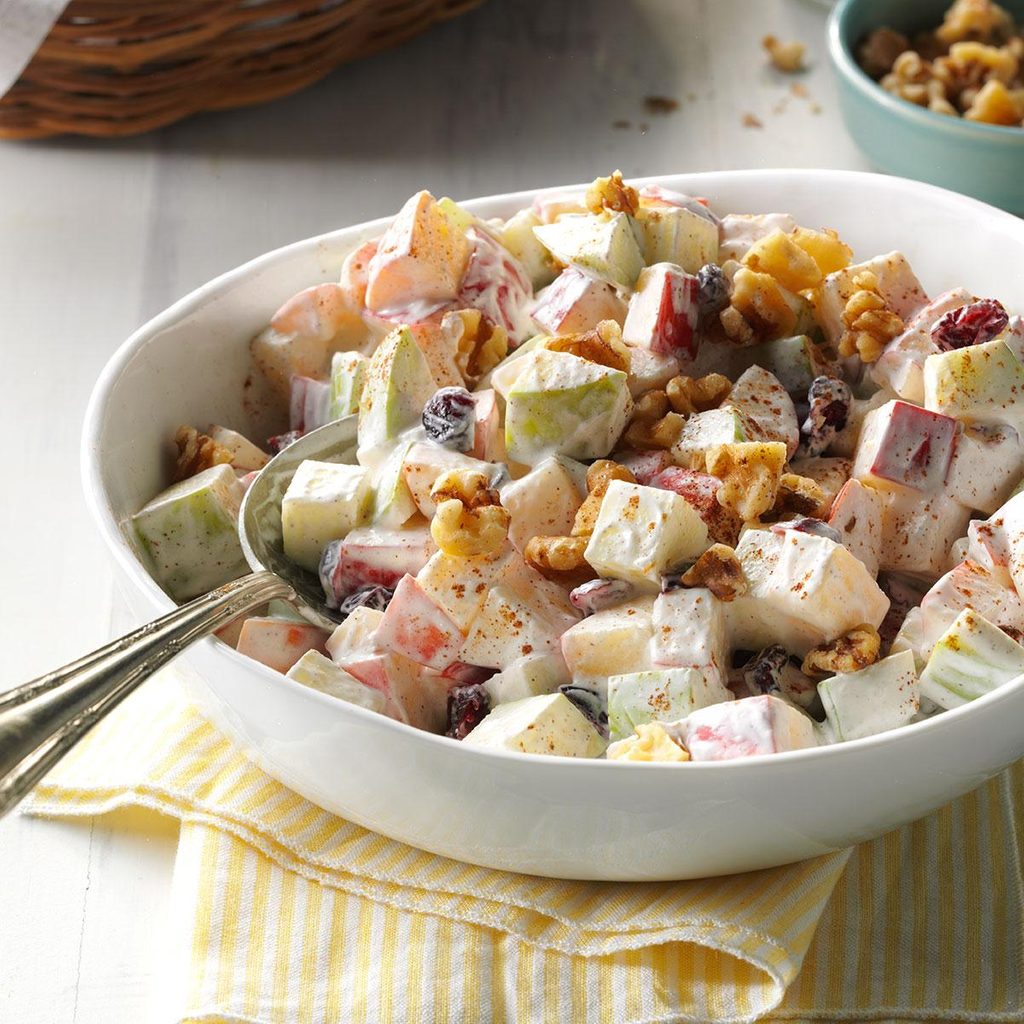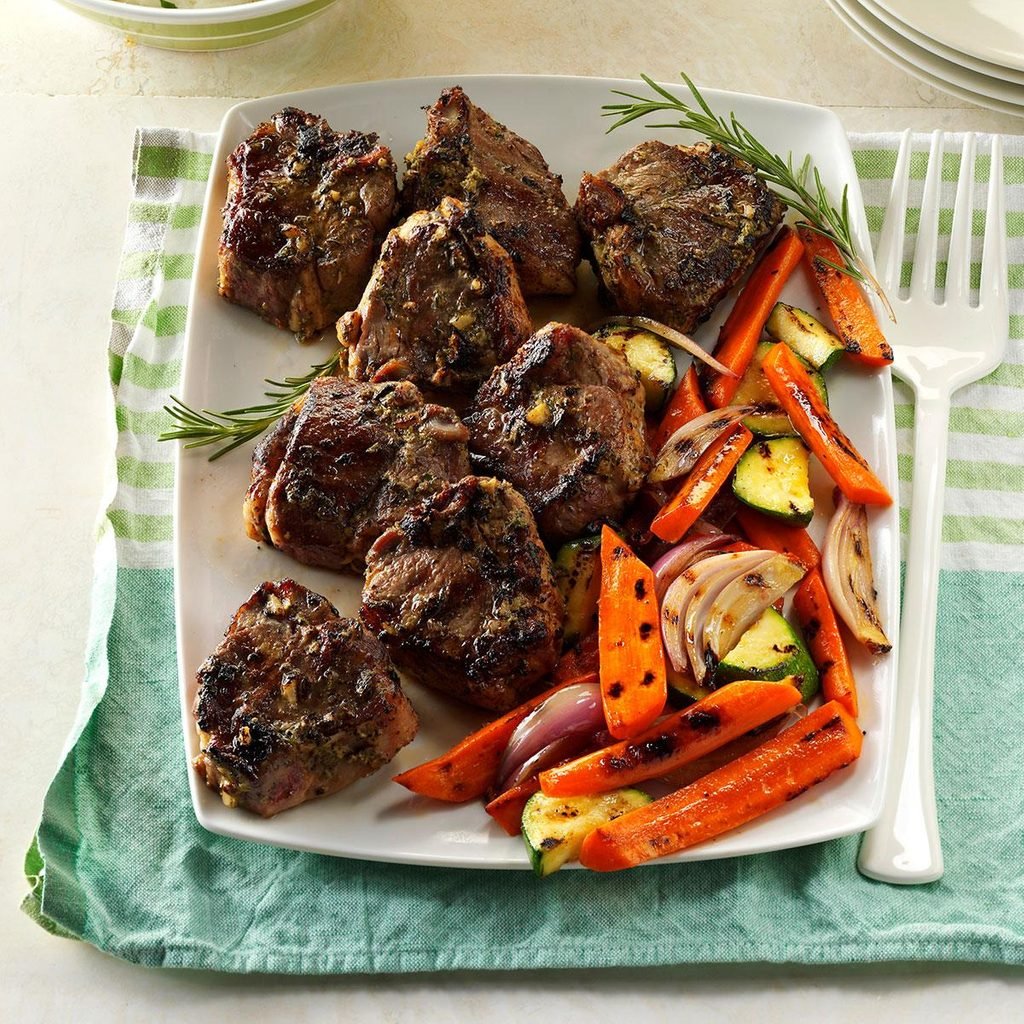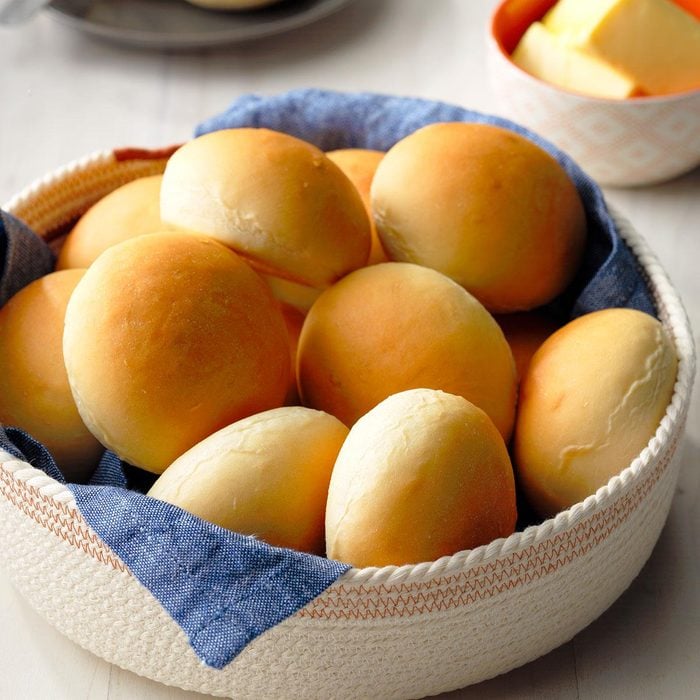Bread Pudding with Nutmeg
I always make this bread pudding recipe for my dad on his birthday and on holidays. He says it tastes exactly like the bread pudding with nutmeg he enjoyed as a child. —Donna Powell, Montgomery City, Missouri
Go to Recipe
Cathedral CookiesChildren love the colorful marshmallows in these festive confections, which look like stained glass when they're sliced. They practically light up the room from the serving platter at our holiday parties. —Carol Shaffer, Cape Girardeau, Missouri
Layered Christmas GelatinChristmastime always means that this recipe comes out of my recipe box. The traditional holiday colors in this salad make the buffet table look so pretty. —Diane Schefelker, Ireton, Iowa
Upside-Down FruitcakeI get tired of people bad-mouthing holiday fruitcakes. It's one of my favorite holiday flavors and I look forward to it every year. This year, I decided to combine it with everyone's favorite, upside-down cake. Try to say no to this fruitcake; I dare you! —
James Schend,
Dairy Freed
Crown Roast with Apricot DressingI have been making crown roasts for many years but was only satisfied with the results when I combined a few recipes to come up with this guest-pleasing version. It’s beautifully roasted with an apricot glaze and a nicely browned stuffing. —Isabell Cooper, Cambridge, Nova Scotia
Celebration Cheese BallsA handful of simple ingredients that go together in minutes, three fun flavorful options…these creamy cheese balls from our Test Kitchen are a darling, do-ahead delight for busy holiday hostesses! Why not whip up several batches? —Taste of Home Test Kitchen, Milwaukee, Wisconsin
Brandy SlushThis slush with a hint of citrus keeps you cool on hot summer days. Even if you're not a tea lover, you'll likely find the mix of flavors pleasing. —Taste of Home Test Kitchen
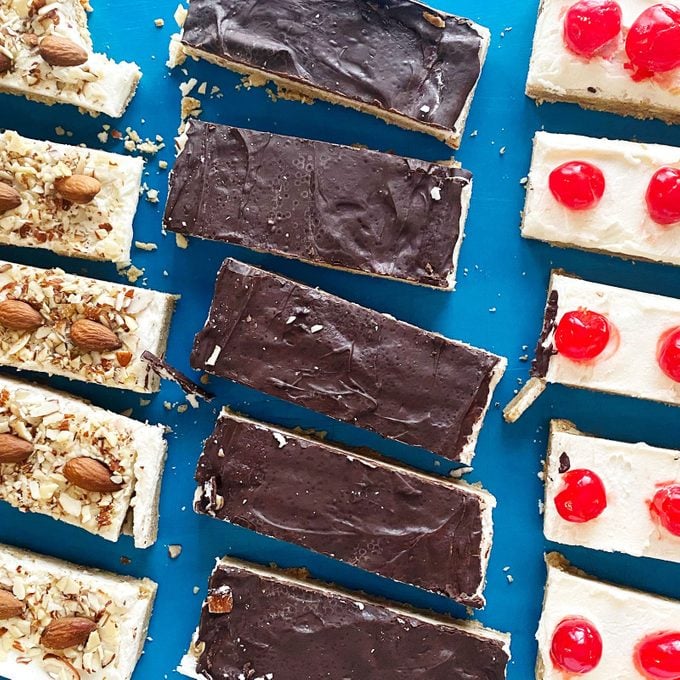 Matt Robicelli for Taste of Home
Matt Robicelli for Taste of Home
You can bake three vintage Christmas recipes in one with this retro 3-in-1 dessert. —
Matt Robicelli, Baltimore, Maryland
Go to Recipe
Baked Ham with PineappleI first learned the technique for baked ham with pineapple for a themed dinner my husband and I hosted. Since it is widely known as the symbol of hospitality, pineapple was the star ingredient on our menu and on this lovely baked ham. —JoAnn Fox, Johnson City, Tennessee
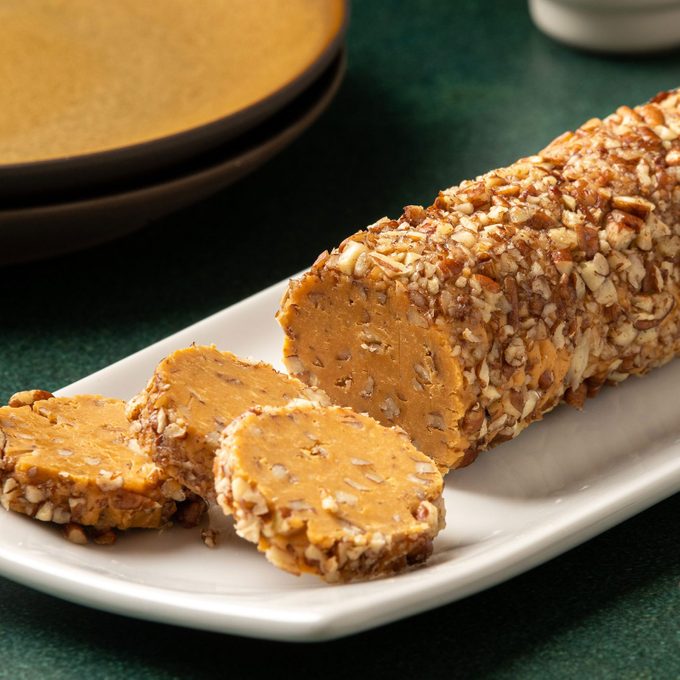 Eric Kleinberg and Kristina Vänni for Taste of Home
Eric Kleinberg and Kristina Vänni for Taste of Home
This vintage Yule log recipe appeared in an ad for Nestle butterscotch morsels in 1967. It’s the perfect two-bite treat when you want a little something sweet to end a hearty holiday meal. —
Kristina Vänni, New York, New York
Go to Recipe
Miniature Meat PiesI make these handheld pies in advance, keep them in the freezer, then bake them the day of the party. They are always a hit at tailgate and potlucks. —Gayle Lewis, Yucaipa, California
Cranberry-Orange Roast DucklingsI came up with this recipe few years ago. The first time I served it, there wasn't a speck of food left on the platter and I knew I had a winning recipe.
—Gloria Warczak, Cedarburg, Wisconsin
Traditional Holiday StuffingSausage and sage add a gourmet taste to this stuffing. It's perfect for large family gatherings, but you can also save some for later. —Lorraine Brauckhoff, Zolfo Springs, Florida
Creamy Pineapple Fluff SaladGuests of all ages will gravitate to this traditional “fluff” salad, chock-full of pineapple, marshmallows and cherry bits. —Janice Hensley, Owingsville, Kentucky
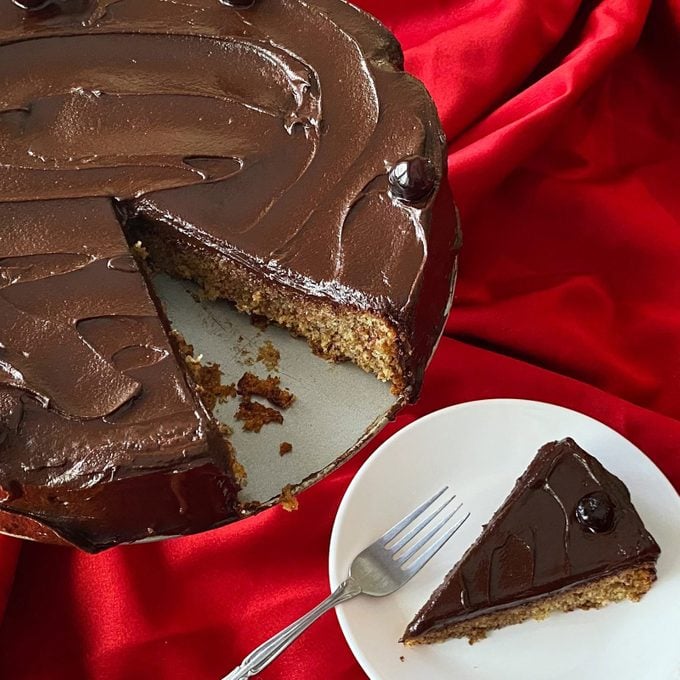 Matt Robicelli for Taste of Home
Matt Robicelli for Taste of Home
Looking for a vintage Christmas recipe that’s rich, indulgent and full of retro flair? This flourless Kahlua cake recipe fits the bill.
—
Matt Robicelli, Baltimore, Maryland
Go to Recipe
Holiday Rum BallsI make these rum balls for special occasions with my wonderful family and friends. The treats are so easy to make and pack a festive punch. — Diane Duschanek, Council Bluffs, Iowa
Icy Holiday PunchPull out the punchbowl for this rosy thirst-quencher that dazzles at Christmas parties. This fun prep-ahead beverage makes any occasion a bit more special. It's delicious with apricot gelatin, too. —Margaret Matson, Metamora, Illinois
Garlic Herbed Beef TenderloinYou don't need much seasoning to add flavor to this tender beef roast. The mild blend of rosemary, basil and garlic does the trick. —Ruth Andrewson, Leavenworth, Washington
Whipped ShortbreadThese whipped shortbread cookies melt in your mouth. Mostly I make them for the holidays, but I'll also prepare them year-round for wedding showers and afternoon teas. —Jane Ficiur, Bow Island, Alberta
Champagne CocktailThis amber champagne cocktail is a bubbly twist on the traditional old-fashioned. Try it with extra dry champagne. —Taste of Home Test Kitchen
Cashew BrittleI like this quick and easy recipe because it doesn't require a candy thermometer. It also makes a wonderful gift for nut lovers on your list. —Rhonda Glenn, Prince Frederick, Maryland
Mocha Yule LogThis eye-catching dessert is guaranteed to delight holiday dinner guests. Chocolate lovers will lick their lips over the yummy cocoa cake, mocha filling and frosting. For a festive touch, I garnish the log with marzipan holly leaves and berries. —Jenny Hughson, Mitchell, Nebraska
Chocolate-Dipped Meringue Sandwich CookiesThese light, airy morsels are twice as nice with two meringue cookies and velvety ganache in between. —Donna Pochoday-Stelmach, Morristown, New Jersey
Cheesy Ham ChowderMy five children all agree that this soothing recipe is wonderful. The soup is full of potatoes, carrots and ham. The best part is that I can get it on the table in only a half hour of hands-on time. —Jennifer Trenhaile, Emerson, Nebraska
Favorite Hot ChocolateYou need just a few basic ingredients to stir up this spirit-warming sipper. The comforting beverage is smooth and not too sweet, making it just right for a cozy chilly night. —Flo Snodderly, North Vernon, Indiana
Sugar Cream PieI absolutely love Indiana sugar cream pie; especially the one that my grandma made for me. Here, we serve it warm or chilled and call it "Hoosier" sugar cream pie. —Laura Kipper, Westfield, Indiana
Glazed Cornish HensIf you're looking to add a touch of elegance to your holiday dinner table, our Test Kitchen experts suggest these Cornish game hens topped with a sweet apricot glaze. —Taste of Home Test Kitchen, Milwaukee, Wisconsin
Meringue Snowballs In CustardMy family has passed down this elegant dessert generation by generation. It started with my Russian great-grandmother, who traveled to America more than 100 years ago. I love continuing the tradition with her recipe. —Tonya Burkhard, Palm Coast, Florida
Apricot Cranberry BreadI was making cranberry bread one day and wanted to try something a little different. I found a jar of apricot jam in the refrigerator and decided to spoon the jam into the center of the bread. It looked lumpy, so I took a knife and cut the jam into the bread. The end result was delicious. —Diane Roth, Milwaukee, Wisconsin
Pickled Pepperoncini Deviled EggsIt's hard to resist these adorable deviled trees on our buffet table. The avocado filling has pepperoncini and cilantro for extra zip. —Carmell Childs, Clawson, Utah
Christmas MeatballsCranberry sauce and brown sugar create a tangy glaze for moist meatballs that are good
Christmas appetizers or
Christmas dinner ideas. We love them so much, I prepare them year-round. —Joyce Bentley, Redlands, California
Grape SaladEveryone raves when I bring this refreshing, creamy grape salad to potlucks. For a special finishing touch, sprinkle it with brown sugar and pecans. —Marge Elling, Jenison, Michigan
Chutney-Glazed CarrotsCarrots slow-cooked with chutney, Dijon and ginger make a zippy side for a barbecue or potluck. We love serving these carrots with grilled chicken or beef roast. —Nancy Heishman, Las Vegas, Nevada
Meringue KissesThere's a nice chocolaty surprise inside these sweet kisses. They're my husband's top choice each Christmas.—Tami Henke, Lockport, Illinois
Never-Fail Scalloped PotatoesTake the chill off any blustery day and make something special to accompany meaty entrees. This is the best scalloped potatoes recipe ever, and my family loves when I serve it. —Agnes Ward, Stratford, Ontario
Gingerbread Men CookiesNo holiday treat platter would be complete without gingerbread men cookies! This is a tried-and-true recipe I'm happy to share with you. —Mitzi Sentiff, Annapolis, Maryland
Aunt Margaret's Sweet Potato CasseroleMy great-aunt made an incredible sweet potato casserole for our holiday dinners. I’ve lightened it up a bit, but we love it just the same. —Beth Britton, Fairlawn, Ohio
Rich Rum CakeWe like a touch of rum for the holidays, and this orangy rum cake is decadent alone or with big swoops of whipped cream. —Nancy Heishman, Las Vegas, Nevada
Skillet Shepherd's PieThis is the best shepherd's pie recipe I've ever tasted. It's very quick to make, and I usually have most—if not all—of the ingredients already on hand. —Tirzah Sandt, San Diego, California
Pfeffernuesse CookiesA German holiday tradition, these fragrant pfeffernuesse cookies pack a warm rush of spices in every bite. Also called peppernuts, they go wonderfully with coffee or tea.—Joanne Nelson, East Stroudsburg, Pennsylvania
Cranberry Waldorf SaladCranberries grow in the coastal area about 50 miles from our home. When they become available, I always make this creamy salad. —Faye Huff, Longview, Washington
Butter Pecan FudgeToasted pecans add a nutty crunch to this creamy fudge, perfect for holiday giving. People always seem to rave about its wonderful caramel flavor. —Pam Smith, Alta Loma, California
Apple-Pecan Baked BrieAs family arrives for a get-together, I make sure this fruity and savory Brie is in the oven so the aromas of cinnamon and apples fill the house. —Alicia Gower, Auburn, New York
Christmas Cauliflower CasseroleThis creamy casserole is filled with tender cauliflower and topped with a sprinkling of crispy herb stuffing. It's become one of our
favorite Christmas casseroles that appeals to both kids and adults in our family. —Carol Rex, Ocala, Florida
Classic Make-Ahead Mashed PotatoesThese make-ahead mashed potatoes save me a ton of time on Christmas Day. No more frantically whipping the potatoes while hungry family and guests hang around the kitchen! —Marty Rummel, Trout Lake, Washington
Holiday Crown Pork RoastCrown roast makes a regal Christmas dinner. Flavored with rosemary, sage and thyme, it’s elegant and simple, a real blessing during the hectic holidays. —Lisa Speer, Palm Beach, Florida
Old-Fashioned Rice PuddingThis comforting dessert is a wonderful way to end any meal. As a girl, I always waited eagerly for the first heavenly bite. Today, my husband likes to top his with a scoop of ice cream. —Sandra Melnychenko, Grandview, Manitoba
The Best Pecan PiePecan pie is a Thanksgiving tradition in my house, and I was on a quest to create the ultimate version. This might be it!—James Schend,
Taste of Home Deputy Editor
Cream of Potato & Cheddar SoupThe Yukon Gold potatoes my daughter shares from her garden make this soup incredible. Add some cheddar cheese and crisp croutons, and it’s just heavenly. It's total comfort with the simplicity of
good ingredients! —Cindi Bauer, Marshfield, Wisconsin
Cranberry-Orange Roast DucklingsI came up with this recipe few years ago. The first time I served it, there wasn't a speck of food left on the platter and I knew I had a winning recipe.
—Gloria Warczak, Cedarburg, Wisconsin
Italian Holiday CookiesMany of our holiday traditions center around the foods my mother made while I was growing up. These cookies, which we called "Strufoli", bring back wonderful memories. —Sue Seymour, Valatie, New York
Also, make sure to check out these
Italian Christmas dinner foods.
Party Potatoes Au GratinHearty helpings of these cheesy spuds will please hungry folks in a hurry. The rich, creamy sauce makes this recipe of my mother's the one folks request most. The potatoes are just as delicious the next day, reheat in the microwave with a little added milk.—Debbie Carlson, San Diego, California
Old-Fashioned GingersnapsI discovered this recipe many years ago, and it's been a favorite among our family and friends ever since. Gingersnaps are timeless—a classic holiday cookie that's welcome year-round. —Francis Stoops, Stoneboro, Pennsylvania
Homemade EggnogOnce, I asked my mother how to make eggnog, and she showed me this recipe. After just one taste, folks will know this homemade holiday drink came from the kitchen, not from the store. —Pat Waymire, Yellow Springs, Ohio
Skillet Pineapple Upside-Down CakeFor a change of pace, you can substitute fresh or frozen peach slices for the pineapple in this old-fashioned recipe. —Bernardine Melton, Paola, Kansas
Rubies on IceGinger and pomegranate are made for each other, and the color of this beverage is tantalizing. If you're looking for a nonalcoholic option, you can easily leave out the vodka for a delicious and festive drink! —Tara Deshpande, New York, New York
Quick Crunchy Apple SaladPair crunchy toppings with smooth vanilla in this apple salad with yogurt recipe. You'll love this creative combination! —Kathy Armstrong, Post Falls, Idaho
Rosemary Lamb ChopsMy father loves lamb, so I make this rosemary lamb chop recipe whenever he visits. It's the perfect main course for holidays or get-togethers. —Kristina Mitchell, Clearwater, Florida
Perfect Dinner RollsThese rolls melt in your mouth. I loved them as a child, and I'm happy to make them for my kids because I know I am creating those same wonderful memories my mom made for me! —Gayleen Grote, Battle View, North Dakota
